 Sights, sounds, and sentiments from the thirty-four countries that made up the Europe of the time. 
Above is the cover of the July 1967 issue of Continental Film Review, a magazine produced by London based Eurap Publishing, which updated readers on the latest developments in European cinema. This issue focuses on the Netherlands, Yugoslavia, Sweden, Greece, Italy, and the Cannes Film Festival.
Here's an interesting quote from within: An indication of Italy's mammoth production appeared in an Italian trade journal a few weeks back which listed thirty-eight films premiered in the previous few weeks, seventy-six ready to be premiered, twenty being edited, forty-four in production, twenty-one about to start shooting and thirty-one being prepared, making a total of 230 films (including, of course, co-productions).
You probably think that's an enormous number, but last year Italy released 356 films. It's amazing how much there is to see from other countries if you care to look, and that's largely what Continental Film Review was about. We have twenty-plus scans below, and other issues scattered here and there in places around the website.
                         
 Lindberg unveils more than just her movie for the Cannes press corps. 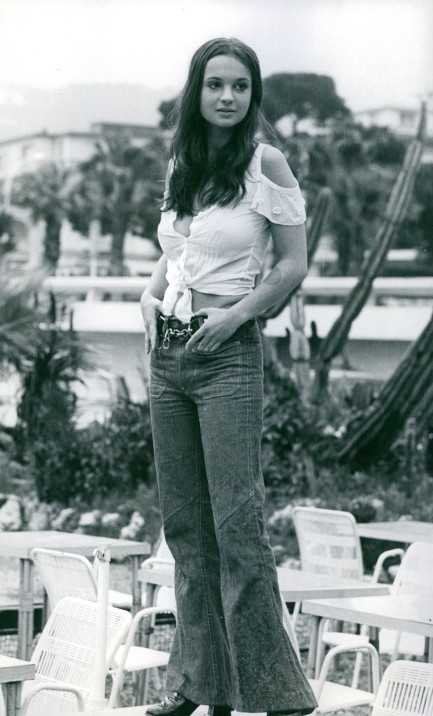
The above image shot today in 1971 shows Swedish star Christina Lindberg in Cannes, France, where she was promoting her movie Exponerad at the Cannes Film Festival. She was also at the prestigious event in 1973 to promote Thriller - en grym film, aka Thriller: A Cruel Picture, so you have to give her production companies Olympic Film and BAV points for effort, even though Lindberg's movies are just arthouse sleaze when boiled down to their essence. And when your movies are not of particular merit what better way to bring attention to them than with random nudity? Shedding clothing was a go-to gimmick for Cannes starlets back when the line between mainstream and erotic film was blurrier than today.
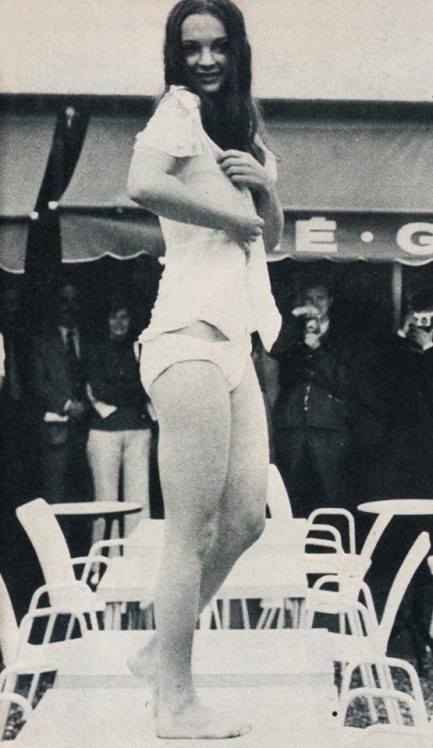 In the first photo Lindberg is on the patio of a Cannes bar, and from her perch atop a table she stripped off everything except her panties while dozens of photographer captured her likeness and bystanders gawped at the spectacle. You can see some of assembled press in the fuzzy reverse angle at right. A bit later, on the terrace of the Majestic Hotel where she was staying, her clothes hit the tiles again, as you see below. In the first photo Lindberg is on the patio of a Cannes bar, and from her perch atop a table she stripped off everything except her panties while dozens of photographer captured her likeness and bystanders gawped at the spectacle. You can see some of assembled press in the fuzzy reverse angle at right. A bit later, on the terrace of the Majestic Hotel where she was staying, her clothes hit the tiles again, as you see below.
She wasn't remotely finished. Here's her memory of a publicity stunt that set Cannes ablaze: “I was going to meet the press out on a pier over the water. After having signed about a thousand invitations, which were given out to select people, I was lowered down from a rented helicopter to the pier topless. There were hundreds of photographers.”
We find it amazing that so few photos of such an event seem to survive today. There must have been thousands of frames shot of that helicopter stunt. Lindberg's recollection of so many photographers shows you the sheer volume of imagery that's lost to time. Luckily, she's well documented anyway thanks to the photo sessions she made for various international magazines and her 1973 photo book. A few of our favorites are here, here, and here. She'll return to Pulp Intl. soon.
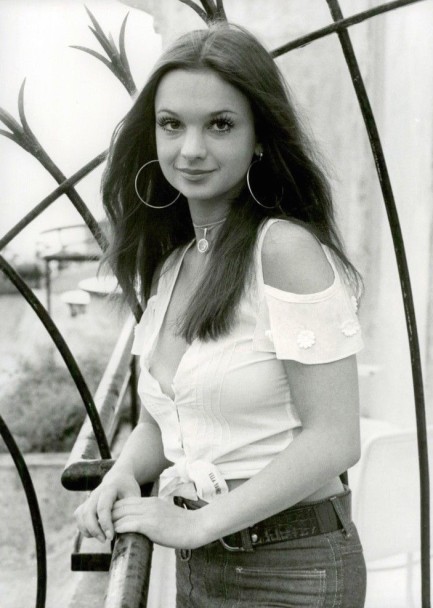 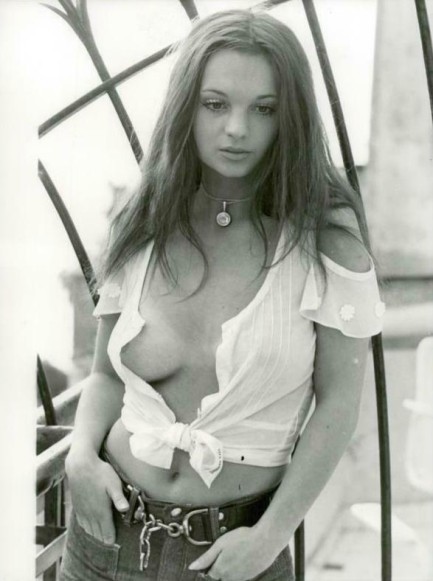
 If a boxer falls when nobody hits him is it still a knockout? 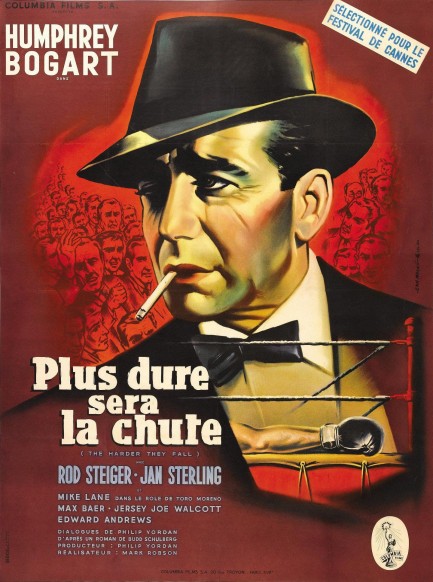
We've been neglecting French promo art lately, so here'a a little something—a poster for Plus dure sera la chute, which is better known as The Harder They Fall. This was painted by Jean Mascii, whose work we last saw several years ago when we talked about the 1960 thriller Plein soleil. We recommend having a look at that to get a better sense of Mascii's skill. He created a very interesting portrait of Humphrey Bogart for this effort. This was Bogart's last movie. He filmed it while gravely ill, having been diagnosed with esophageal cancer, but did his work in legendary style, a true professional, working long hours, shooting retakes, and generally doing all he could to prevent his condition from affecting the production.
Bogart plays a struggling sports writer hired by shady fight promoter Rod Steiger to be the press agent for his new discovery—a gigantic but glass-jawed carnival strongman from Argentina named Toro Moreno. Steiger wants Bogart to sell Toro as the next great heavyweight contender, but in order to do so they need to send him on a bum-of-the-month tour to knock out a series of hapless opponents paid to take dives. After Toro has been built up in the press as the second coming of the heavyweight division, Steiger plans to make a bundle with a match against the champ, played by Max Baer. Bogart signs on for this ride because after all his work in the newspaper business he has nothing, and wants to finally make real money. But it could cost his reputation, and because Toro has no clue the fights he's winning are fixed, the scheme can only end with the poor overconfident dupe slaughtered by the champ.
Steiger would win an Academy Award in 1967 for In The Heat of the Night, and here, more than a decade earlier, you can see that achievement as almost inevitable as you watch him dominate the screen. He's simply great in this, and Bogart gives an excellent performance too, failing physically but soldiering onward, using that world weary mug of his to impart a lifetime's worth of fatigue and disappointment. The movie also features Jan Sterling. We had no idea she'd gone in for rhinoplasty, and at first weren't positive it was her. It is though, and after writing just recently how gorgeous she was we're sad she didn't see her own perfection and instead chose to go under the surgeon's knife. But her body her choice. She's good as always, here playing Bogart's conscience, trying to keep him from sliding down the slippery slope to amorality.
There's another person who should be mentioned—Mike Lane as the lumbering Toro Moreno. This was his debut role, and you'd think there weren't many more parts out there for a guy standing 6'8”, but surprisingly he accumulated almost seventy acting credits, almost all on television, where he appeared in shows of every type, from Gunsmoke to Get Smart. Obviously, any vintage boxing movie involves mimetic acting, and the fighting here isn't realistic—quantum leaps in how to convincingly portray ring scenes came later—but they serve their purpose. And for boxing realists, the movie gets extra credit due to the presence of both Baer and Jersey Joe Walcott. The Harder They Fall opened in March 1956, and had its French premiere today at the 1956 Cannes Film Festival. 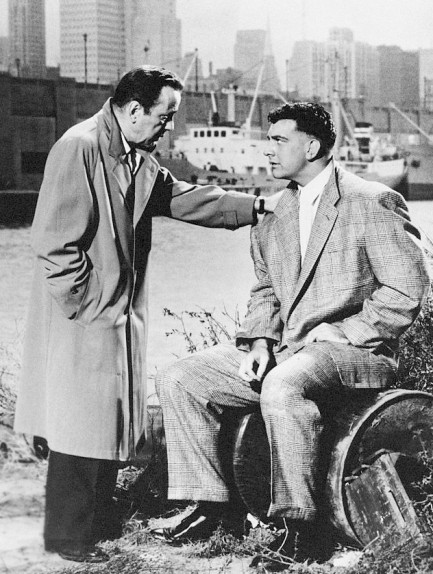 Fine, Toro, you're huge. Massive. Enormous. But you need to learn how to box or the champ is going to crush your face like a graham cracker. Fine, Toro, you're huge. Massive. Enormous. But you need to learn how to box or the champ is going to crush your face like a graham cracker.
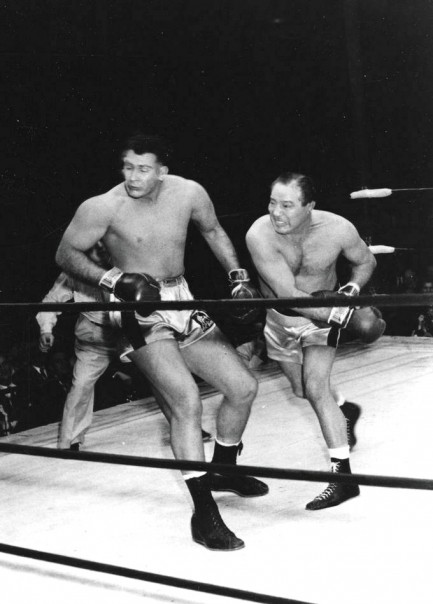 Hi, champ! Before we start, I just want to say I'm probably your biggest admir— Hi, champ! Before we start, I just want to say I'm probably your biggest admir—
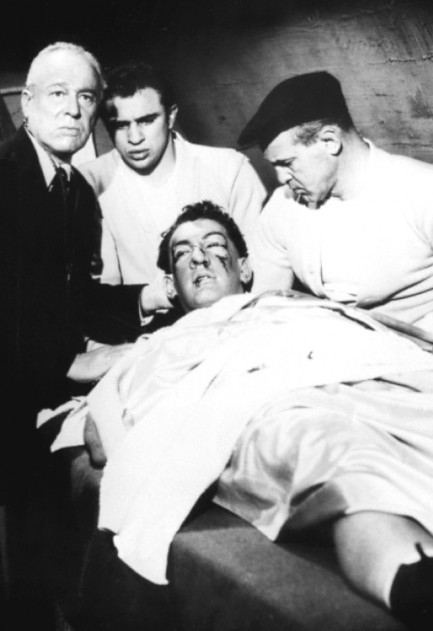 I thought that whole graham cracker speech was just Bogie being colorful. I thought that whole graham cracker speech was just Bogie being colorful.
 Mitchum packs everything he needs for traveling except his sleuthing hat. 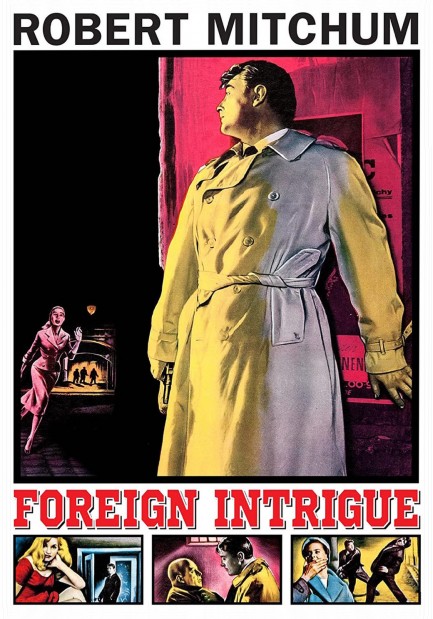
This beautiful poster for the Robert Mitchum thriller Foreign Intrigue is yet another framable delight from the golden age of Hollywood. Wikipedia calls this movie a film noir, but genre designations are often wrong there and on IMDB. This is actually a spy movie, often light in tone, sort of like the later films Charade and Arabesque. Mitchum is an American in Paris working as a press agent for a reclusive one percenter. When his employer dies of a heart attack, Mitchum comes to believe there was more to the death than a blown ventricle. He follows a trail of clues from the French Riviera to Vienna and Stockholm, which is where the foreign part of Foreign Intrigue comes in. The intrigue part? Well, that never fully develops. In fact, the movie falls back on the cliché of having the villains explain their plot to the protagonist. It has to do with money, blackmail, traitors, and Hitler. Trust us, it's not as interesting as it sounds. Compounding the narrative problems is a dopey soundtrack and a Mitchum who's short on charm here. The flirtations between him and Swedish love interest Ingrid Thulin are solid wood. She went on to win Best Actress at the 1958 Cannes Film Festival, which goes to show that half of acting is screenwriting. Are there any saving graces to Foreign Intrigue? Of course. It's well shot, atmospheric, cast with international actors and their wonderful accents, and is a nice travelogue, encompassing Mediterranean villas, Vienna backstreets, and Swedish lakes, all in lush Eastmancolor. And Mitchum is watchable even in a film that mostly wastes his considerable star power. Intrigued? Then go for it. Foreign Intrigue premiered today in 1956. 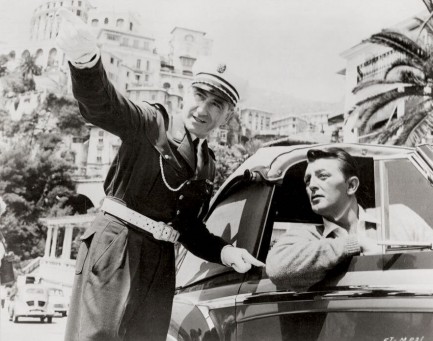 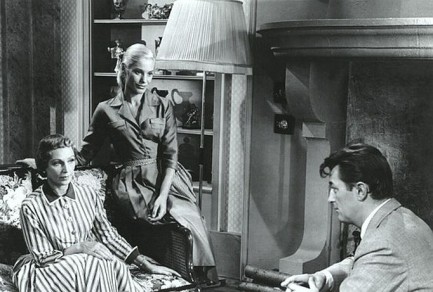 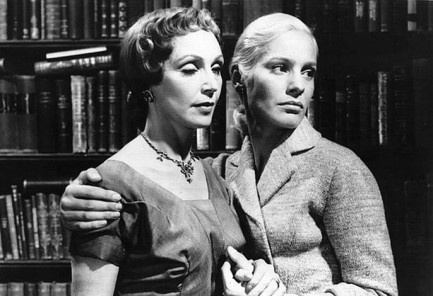 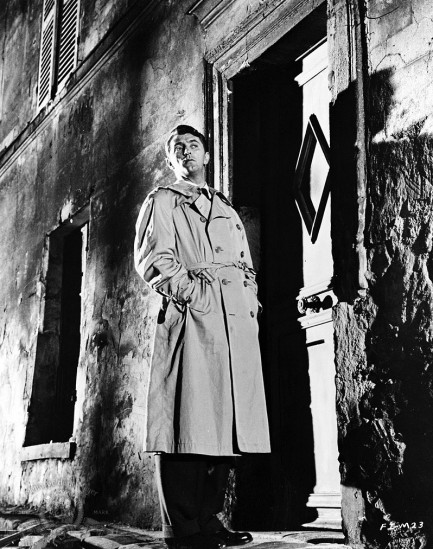 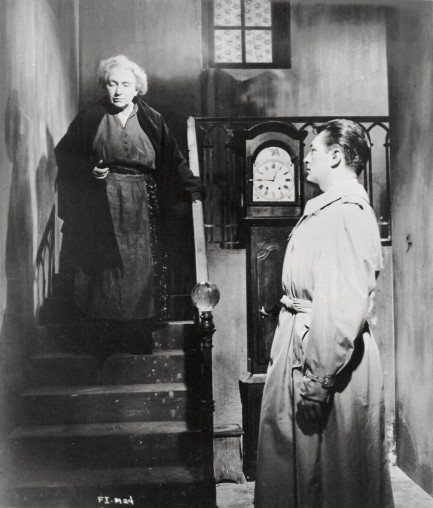 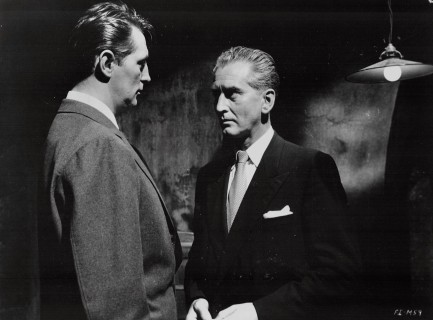 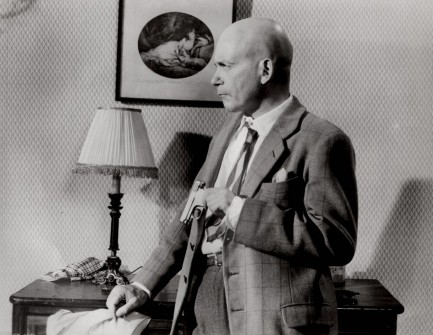 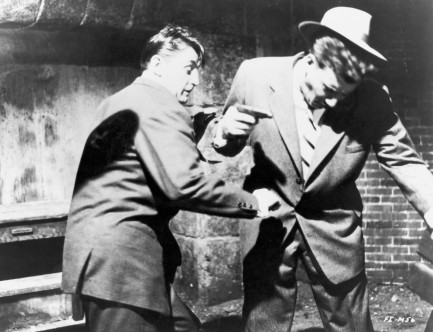 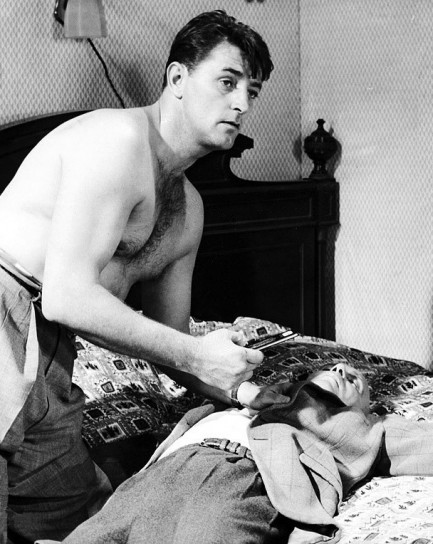 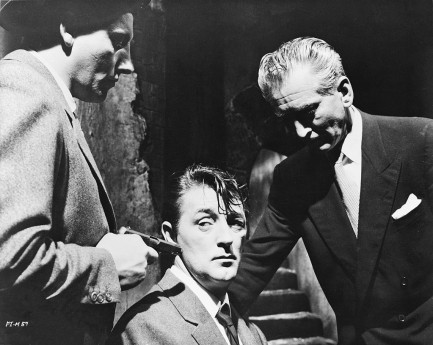 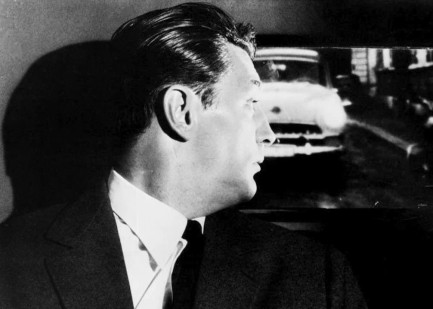 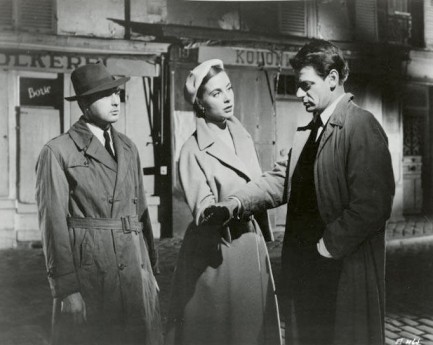 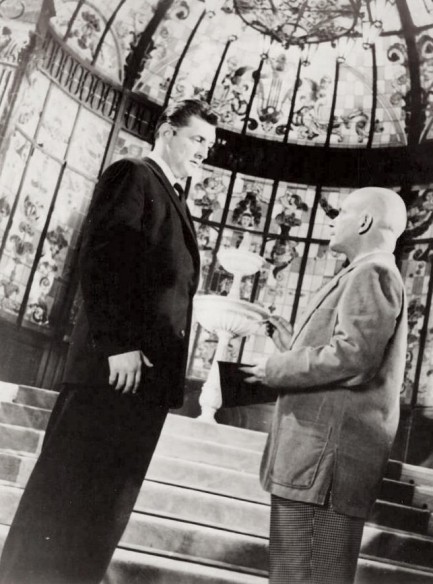 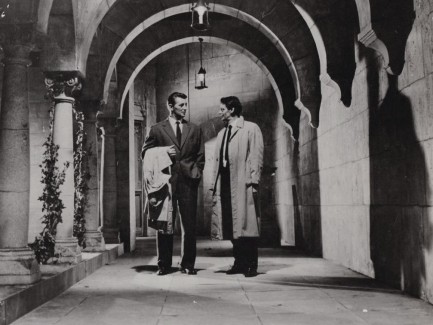 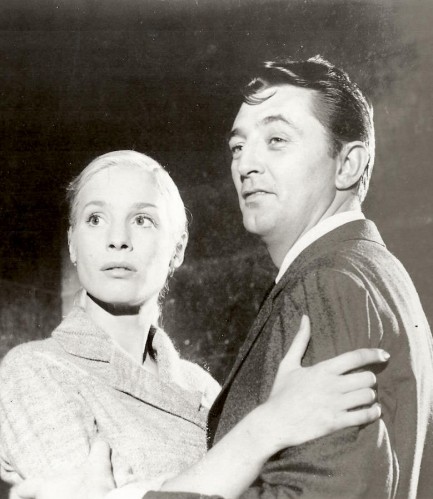 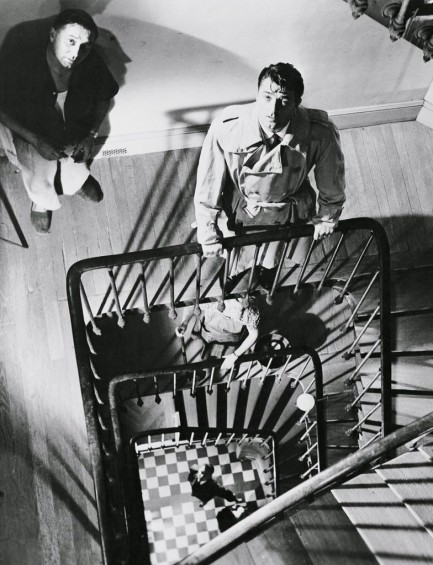
 Hitchcock says no festival for you this year! 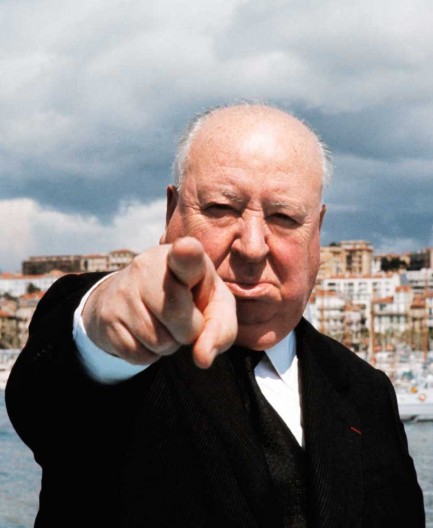
The 73rd edition of the Festival de Cannes, aka the Cannes Film Festival, would have kicked off today in the south of France, but was cancelled a while back. It's just one of a wave of event cancellations that will cascade through the year. Festivals as diverse as Burning Man and San Fermin, aka the Running of the Bulls, have also been shelved. But getting back to Cannes, we thought this would be a good moment to commemorate past fests with some historical photos. Above you see Alfred Hitchcock on a boat with the town in the background, in 1972, and below are about fifty pix from the 1940s through 1970s, documenting various iconic moments, and a few quieter ones. Maybe the Cannes Film Festival will back next year, maybe not. At this point, predicting anything is an exercise in futility. But at least we'll always have the memories. 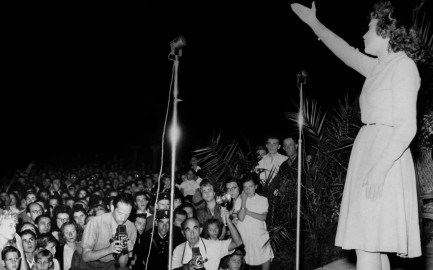 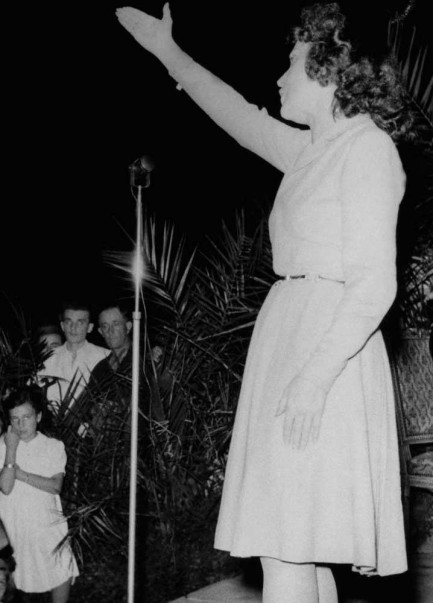 Edith Piaf sings on the terrace of the Carlton Hotel on the iconic Boulevard de la Croisette at the first Festival de Cannes to be held under that name, in 1946. Back then the event took place in September and October, but would shift to May a bit later. Edith Piaf sings on the terrace of the Carlton Hotel on the iconic Boulevard de la Croisette at the first Festival de Cannes to be held under that name, in 1946. Back then the event took place in September and October, but would shift to May a bit later.
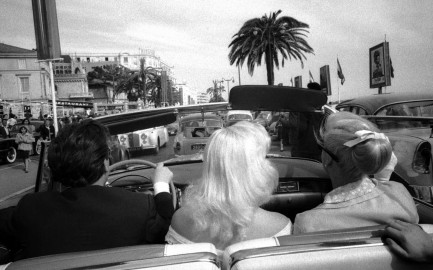 Diana Dors and Ginger Rogers arrive at the fest the only way anyone should—breezing along the beachfront in a convertible, in 1956, with an unknown driver. Diana Dors and Ginger Rogers arrive at the fest the only way anyone should—breezing along the beachfront in a convertible, in 1956, with an unknown driver.
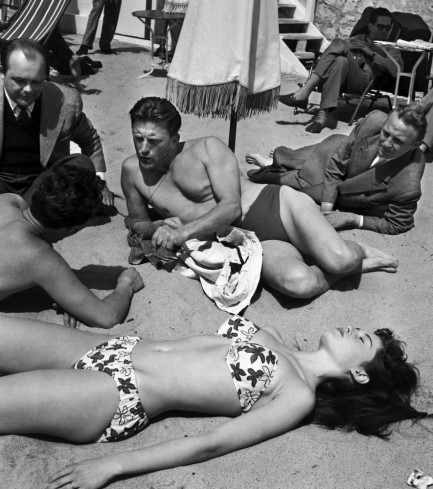 Kirk Douglas holds court on the beach in 1953, and Brigitte Bardot soaks up rays in the foreground. Kirk Douglas holds court on the beach in 1953, and Brigitte Bardot soaks up rays in the foreground.
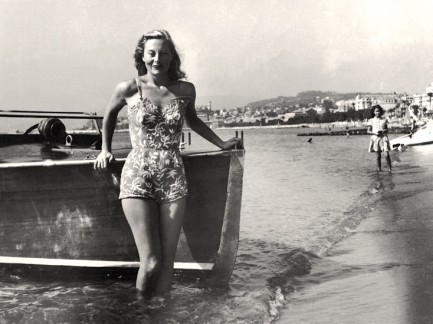 Michele Morgan poses at the first Festival in 1946. Photo ops of this sort were essential sources of publicity for stars, and would soon become opportunities for non-stars seeking to be discovered. Michele Morgan poses at the first Festival in 1946. Photo ops of this sort were essential sources of publicity for stars, and would soon become opportunities for non-stars seeking to be discovered.
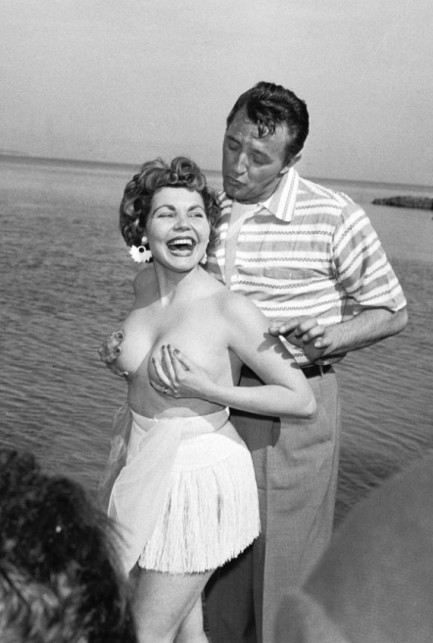 Case in point. Robert Mitchum poses with actress Simone Sylva in 1954. Sylva was allegedly not supposed to be there, but shucked her top and photo-bombed Douglas in an attempt to raise her profile. It didn't work. She made only a couple of credited movie appearances after her topless stunt. Case in point. Robert Mitchum poses with actress Simone Sylva in 1954. Sylva was allegedly not supposed to be there, but shucked her top and photo-bombed Douglas in an attempt to raise her profile. It didn't work. She made only a couple of credited movie appearances after her topless stunt.
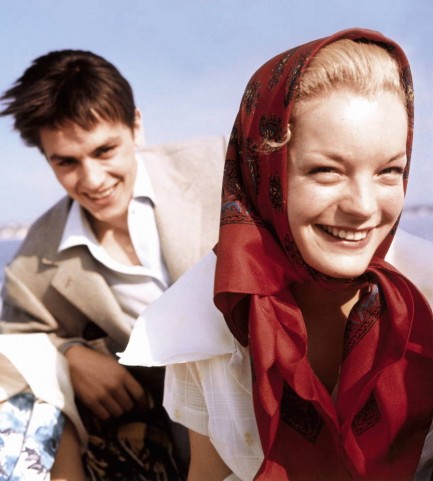 Romy Schneider and Alain Delon at the 1959 fest. Romy Schneider and Alain Delon at the 1959 fest.
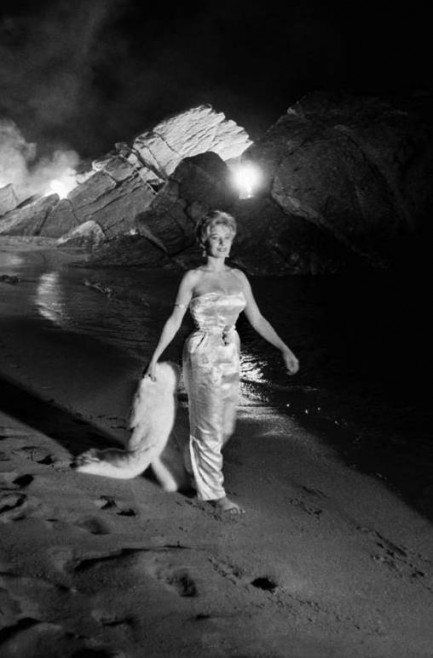 An unidentified model or actress poses in the style of Anita Ekberg from La dolce vita in 1960. This looks like it was shot at Plage du Midi, which is a beach located a little ways west of the Cannes town center. An unidentified model or actress poses in the style of Anita Ekberg from La dolce vita in 1960. This looks like it was shot at Plage du Midi, which is a beach located a little ways west of the Cannes town center.  A unidentified partygoer is tossed into a swimming pool after La Dolce Vita won the the 1960 Palme d’Or. The Festival is almost as well known for legendary parties as for legendary film premieres. A unidentified partygoer is tossed into a swimming pool after La Dolce Vita won the the 1960 Palme d’Or. The Festival is almost as well known for legendary parties as for legendary film premieres.
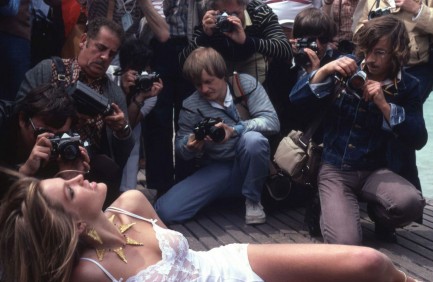 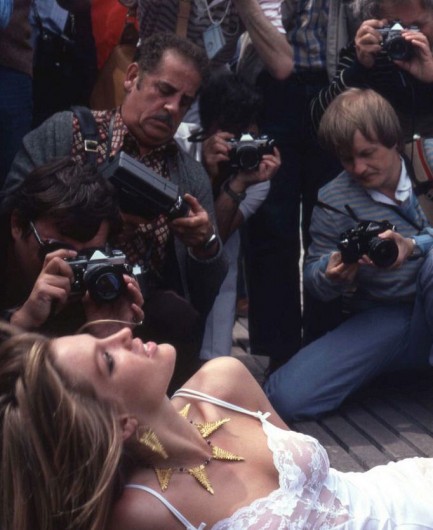 Another unidentified model or actress poses on the boardwalk in 1979. Generally, you don't have to be known to draw a crowd of photographers—you just have to be nearly bare. She's wearing lingerie, so that explains the interest, though this is modest garb for a Cannes publicity stunt. It's never a surprise to see a headline-seeking film hopeful strip all the way down to a string ficelle féminin, or thong, which is the limit of what is legal in Cannes Another unidentified model or actress poses on the boardwalk in 1979. Generally, you don't have to be known to draw a crowd of photographers—you just have to be nearly bare. She's wearing lingerie, so that explains the interest, though this is modest garb for a Cannes publicity stunt. It's never a surprise to see a headline-seeking film hopeful strip all the way down to a string ficelle féminin, or thong, which is the limit of what is legal in Cannes
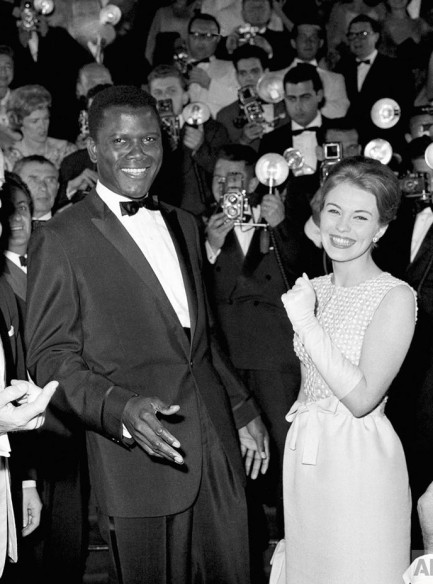 Sidney Poitier and Jean Seberg have a laugh in 1961. This was the year Poitier's flick Paris Blues was released, so it's possible he had jetted down from the capital for the Festival. Sidney Poitier and Jean Seberg have a laugh in 1961. This was the year Poitier's flick Paris Blues was released, so it's possible he had jetted down from the capital for the Festival.
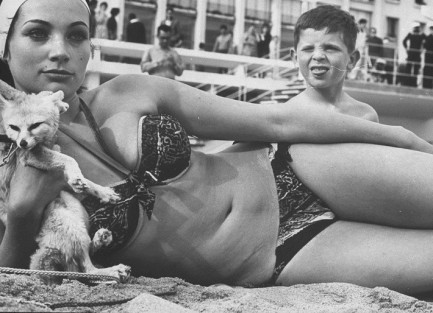 Philomène Toulouse relaxes on the sand in 1962 while a boy practices the classic French look of disgust he'll be using the rest of his life. Philomène Toulouse relaxes on the sand in 1962 while a boy practices the classic French look of disgust he'll be using the rest of his life.  Actor Bernard Blier, 1975. Actor Bernard Blier, 1975. 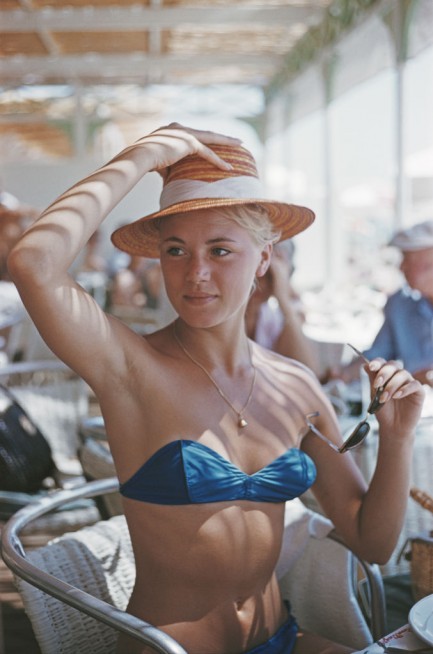 An unidentified bikini wearer boldly enjoys a lunch in a café on the Croisette, 1958. An unidentified bikini wearer boldly enjoys a lunch in a café on the Croisette, 1958. 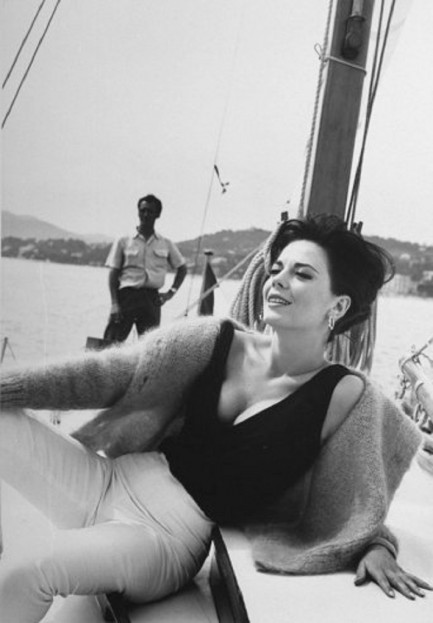 Natalie Wood aboard a sailboat in 1962. Natalie Wood aboard a sailboat in 1962.
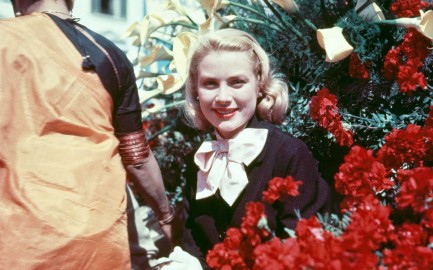 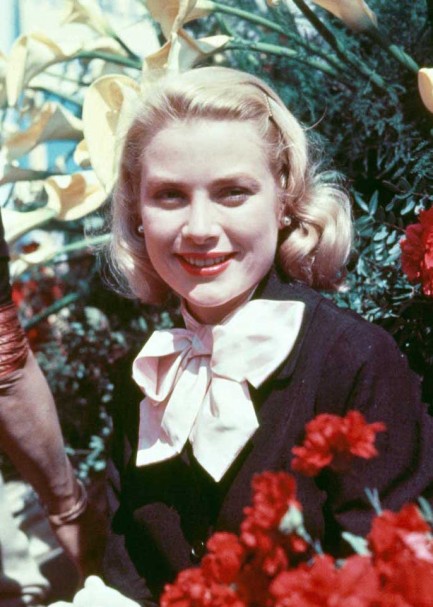 Grace Kelly, 1955. Grace Kelly, 1955.
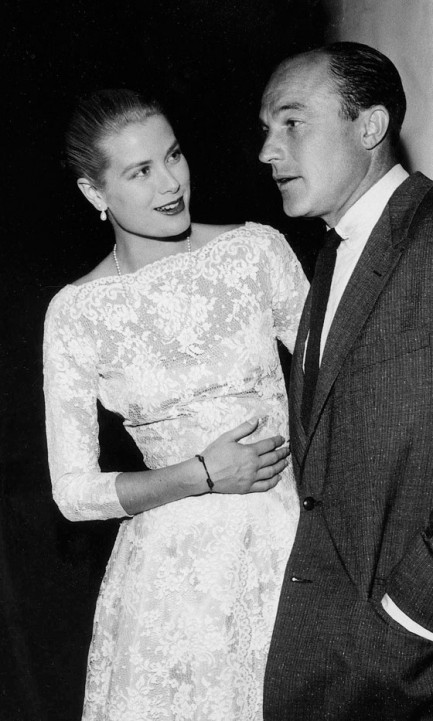 Kelly times two—Grace Kelly and Gene Kelly, hanging out, also in 1955. Kelly times two—Grace Kelly and Gene Kelly, hanging out, also in 1955.
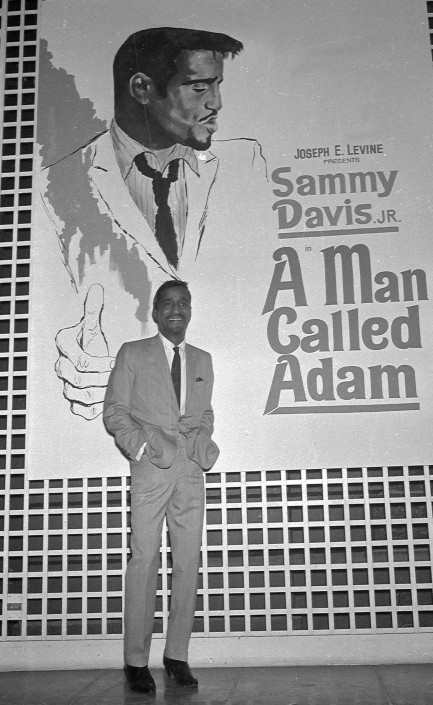 Sammy Davis, Jr. poses in front of a billboard promoting his film A Man Called Adam, 1966. Sammy Davis, Jr. poses in front of a billboard promoting his film A Man Called Adam, 1966. 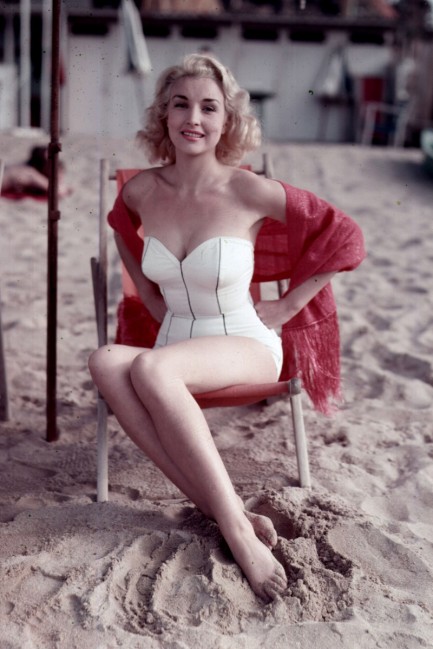 Joan Scott gets sand between her toes in 1955. Scott is obscure. She isn't even the most famous Joan Scott anymore. The IMDB entry for the only Joan Scott near the appropriate age is for an actress born in 1920 who didn't begin acting until 1967. The Joan Scott above doesn't look thirty-five, though, and we doubt she would have been the subject of this somewhat well-known photo without parlaying it into a film appearance before twelve years had passed. So we don't think this is the Joan Scott referenced on IMDB. Joan Scott gets sand between her toes in 1955. Scott is obscure. She isn't even the most famous Joan Scott anymore. The IMDB entry for the only Joan Scott near the appropriate age is for an actress born in 1920 who didn't begin acting until 1967. The Joan Scott above doesn't look thirty-five, though, and we doubt she would have been the subject of this somewhat well-known photo without parlaying it into a film appearance before twelve years had passed. So we don't think this is the Joan Scott referenced on IMDB. 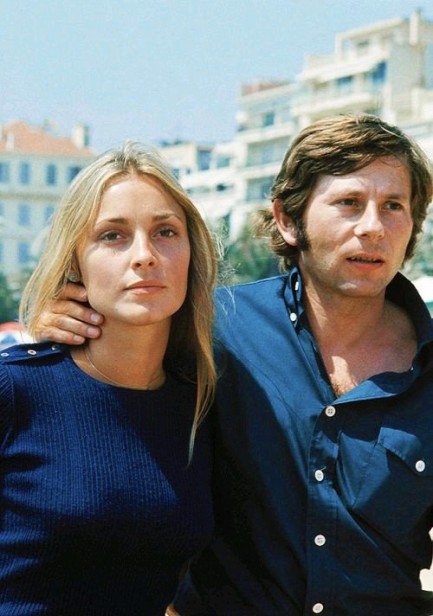 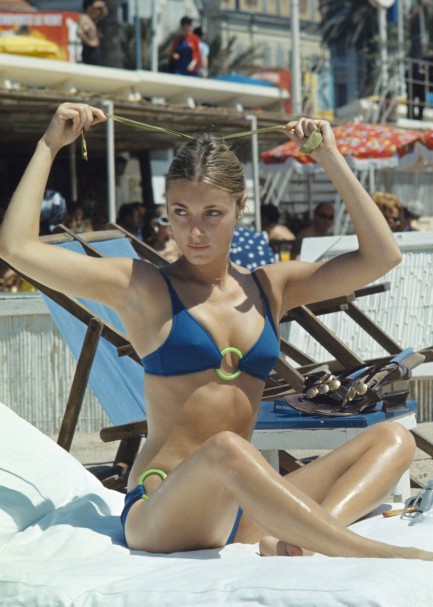 Sharon Tate, with Roman Polanski, and solo, 1968. Sharon Tate, with Roman Polanski, and solo, 1968.
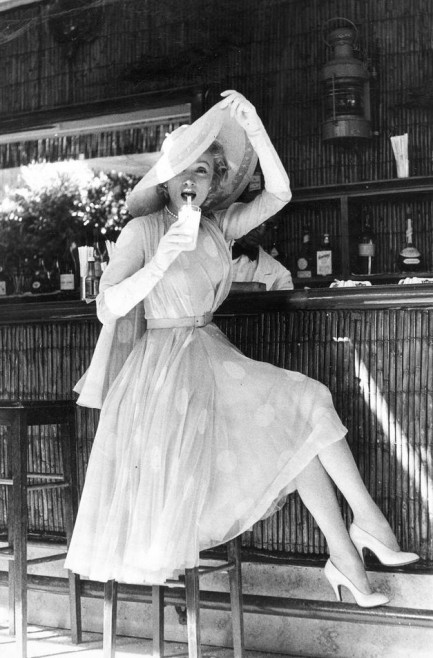 Marlene Dietrich brings glamour to a tiki themed bar in 1958. Marlene Dietrich brings glamour to a tiki themed bar in 1958.
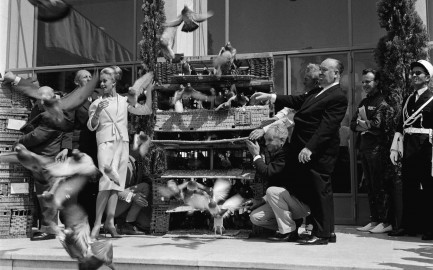 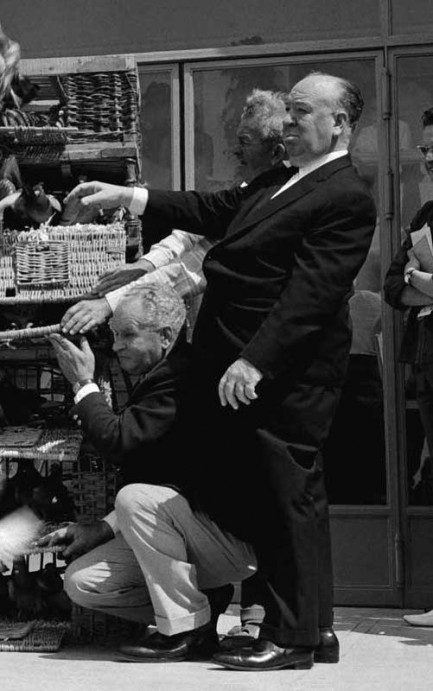 Tippi Hedren and Alfred Hitchcock release caged birds as a promo stunt for The Birds in 1963. Tippi Hedren and Alfred Hitchcock release caged birds as a promo stunt for The Birds in 1963.
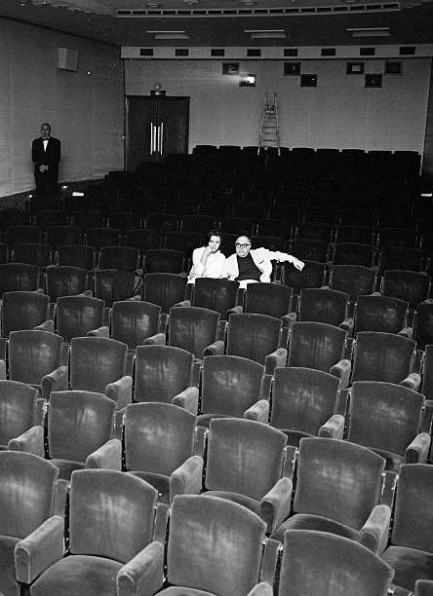 Sophia Loren sits with husband Carlo Ponti, who was a member of the 1966 Festival jury. Sophia Loren sits with husband Carlo Ponti, who was a member of the 1966 Festival jury.
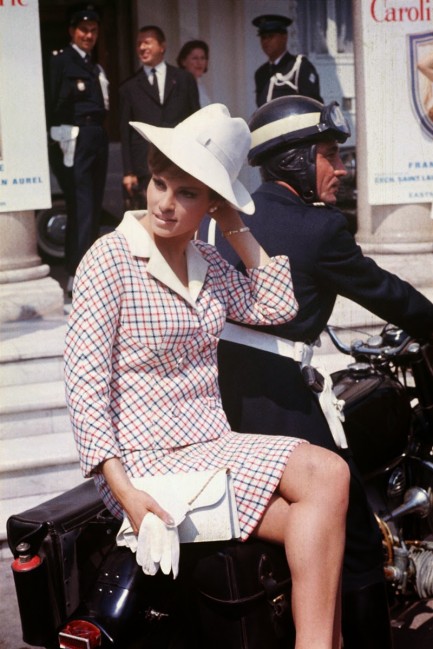 Raquel Welch poses on a motorcycle in 1966. Raquel Welch poses on a motorcycle in 1966.
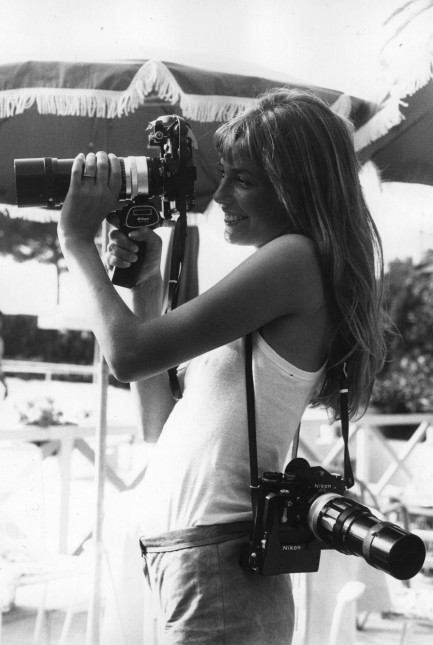 Jane Birkin takes aim with one of her cameras in 1975. Jane Birkin takes aim with one of her cameras in 1975. 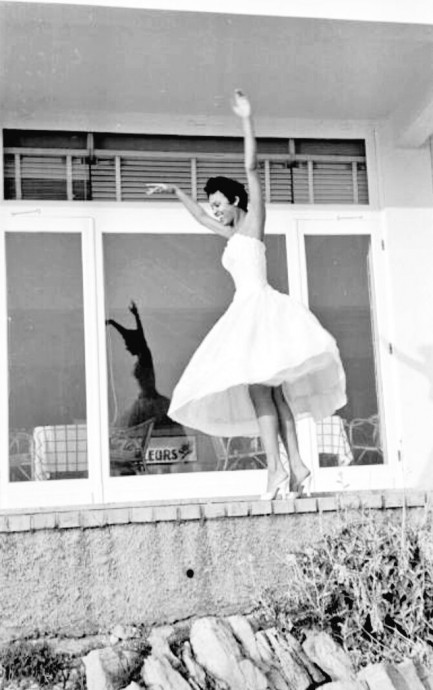 Dorothy Dandridge frolics in 1955, when she was promoting her film Carmen Jones. Dorothy Dandridge frolics in 1955, when she was promoting her film Carmen Jones.
 Cinematic icon Catherine Deneuve and her sister Françoise Dorléac in 1965. Dorléac died in an automobile accident a couple of years later. Cinematic icon Catherine Deneuve and her sister Françoise Dorléac in 1965. Dorléac died in an automobile accident a couple of years later. 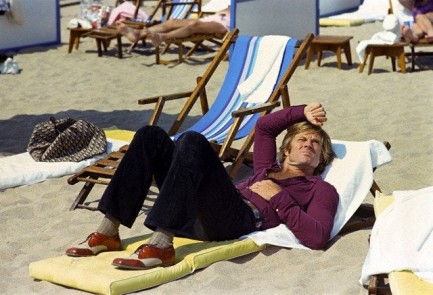 Robert Redford lounges on the beach in 1972. Based on his outfit you'd think he was in Cannes to promote The Sting, but he was actually there for his western Jeremiah Johnson, which screened May 7 of that year. Robert Redford lounges on the beach in 1972. Based on his outfit you'd think he was in Cannes to promote The Sting, but he was actually there for his western Jeremiah Johnson, which screened May 7 of that year.
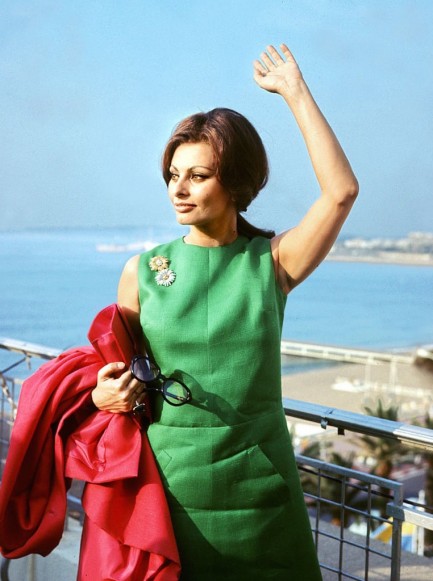 Sophia Loren waves to well-wishers in 1964. Sophia Loren waves to well-wishers in 1964.
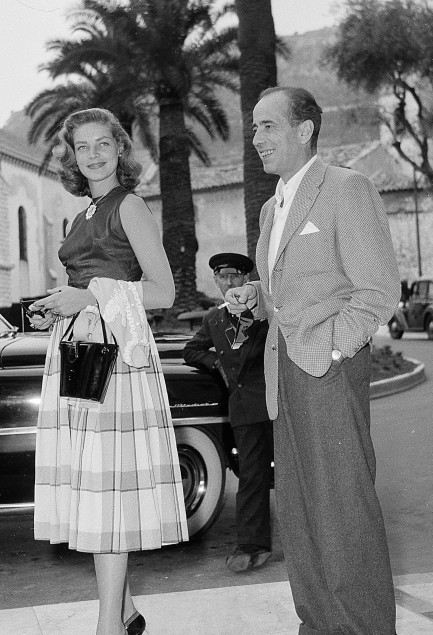 Bogie and Bacall paired up and looking distinguished in 1957. Bogie and Bacall paired up and looking distinguished in 1957.
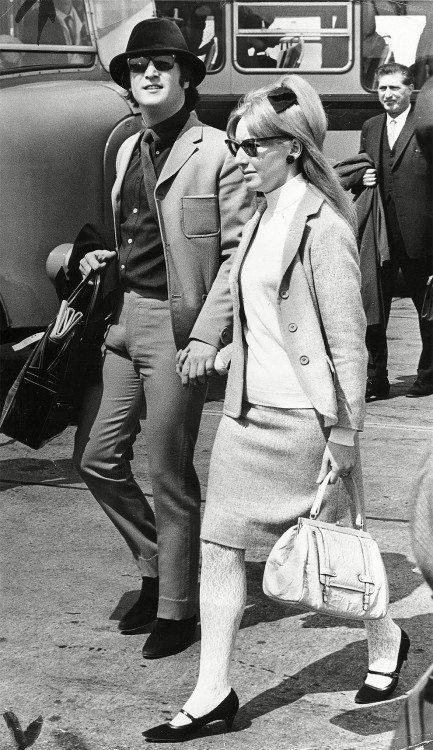 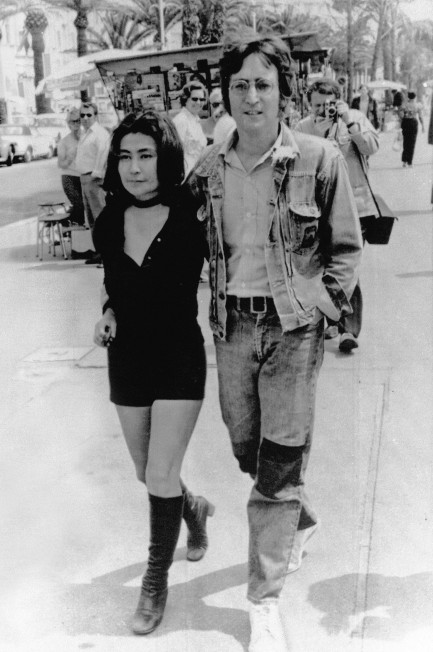 John and Cynthia Lennon in 1965, and John with Yoko Ono in 1971. Every story John told on that second trip probably started with, “When I was here with the first love of my life...” until Yoko smacked him across the mouth. John and Cynthia Lennon in 1965, and John with Yoko Ono in 1971. Every story John told on that second trip probably started with, “When I was here with the first love of my life...” until Yoko smacked him across the mouth.
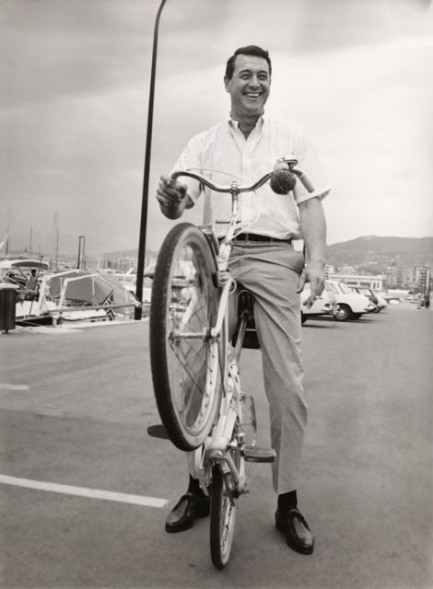 Rock Hudson and bicycle in 1966. Rock Hudson and bicycle in 1966.
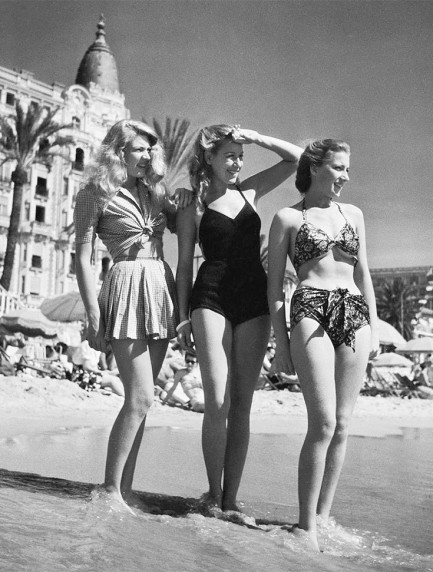 Unidentified actresses pose on the beach in 1947. To the rear is the Hotel Carlton, mentioned in the Edith Piaf image, built on the Croisette and finished in 1910. Unidentified actresses pose on the beach in 1947. To the rear is the Hotel Carlton, mentioned in the Edith Piaf image, built on the Croisette and finished in 1910.
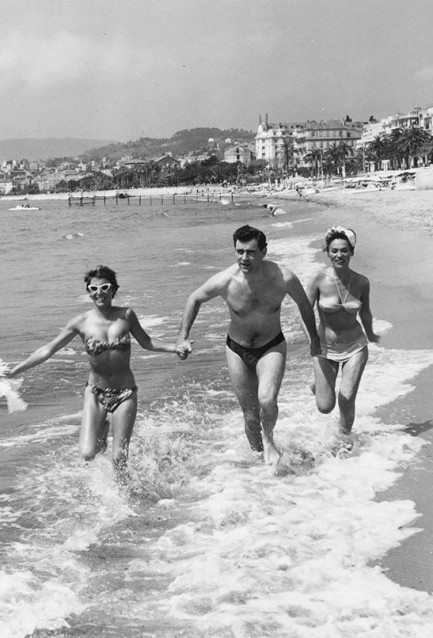 George Baker, Bella Darvi (right—your right, not his), and an unknown acquaintance have a surfside run/photo op in 1956. George Baker, Bella Darvi (right—your right, not his), and an unknown acquaintance have a surfside run/photo op in 1956.
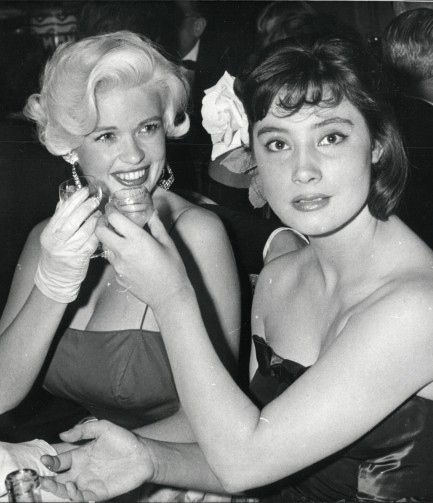 Jayne Mansfield and Russian actress Tatiana Samoïlova enjoy a toast in 1958. Mansfield probably shared the story of how she once made Sophia Loren stare at her boobs, and Samoïlova said, “Cheers to you—well played, you provocative American minx.” Jayne Mansfield and Russian actress Tatiana Samoïlova enjoy a toast in 1958. Mansfield probably shared the story of how she once made Sophia Loren stare at her boobs, and Samoïlova said, “Cheers to you—well played, you provocative American minx.”
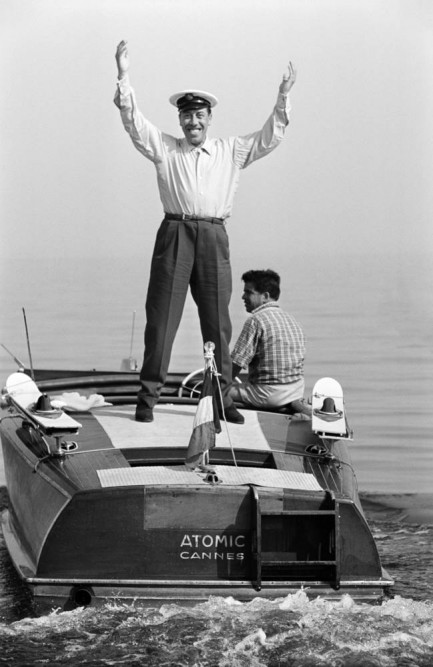 French actor Fernandel, whose real name was Fernand Contandin, on his boat Atomic in 1956. French actor Fernandel, whose real name was Fernand Contandin, on his boat Atomic in 1956.
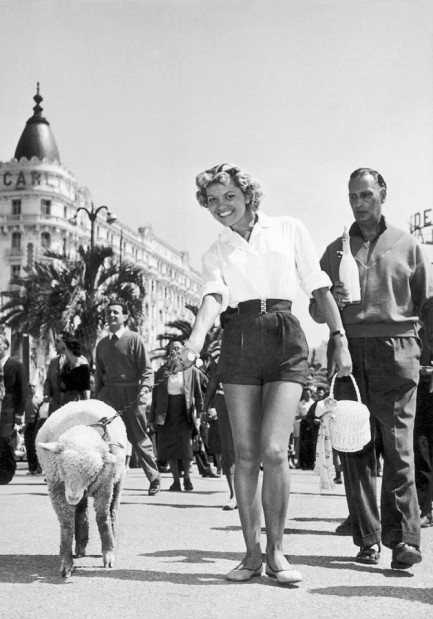 Arlette Patrick figures out a different way to generate publicity—by walking her sheep on the Croisette in 1955. Arlette Patrick figures out a different way to generate publicity—by walking her sheep on the Croisette in 1955.
 A pair of water skiers show perfect form in 1955, as a battleship floats in the background. A pair of water skiers show perfect form in 1955, as a battleship floats in the background.
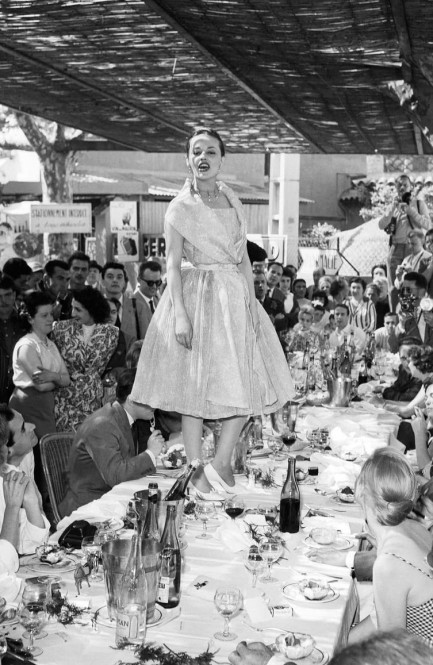 Jeanne Moreau, for reasons that are unclear, poses on a banquet table in 1958. Most sources descibe this in such a way as to make it seem spontaneous, but we have our doubts. It's a great shot, though. Jeanne Moreau, for reasons that are unclear, poses on a banquet table in 1958. Most sources descibe this in such a way as to make it seem spontaneous, but we have our doubts. It's a great shot, though.
 Two unidentified women take in the scene from the terrace of the Hotel Carlton, 1958. This shot is usually said to portray two tourists, but the woman on the left is the same person as in the bikini lunch shot from earlier, which tells us she's a model or actress, and both photos are staged. Like we said, publicity is everything in Cannes. Two unidentified women take in the scene from the terrace of the Hotel Carlton, 1958. This shot is usually said to portray two tourists, but the woman on the left is the same person as in the bikini lunch shot from earlier, which tells us she's a model or actress, and both photos are staged. Like we said, publicity is everything in Cannes. 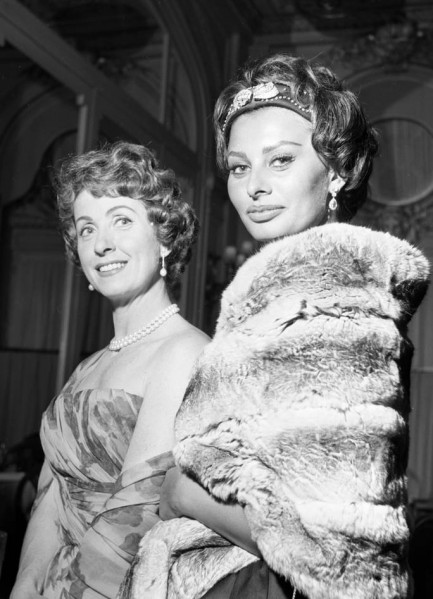 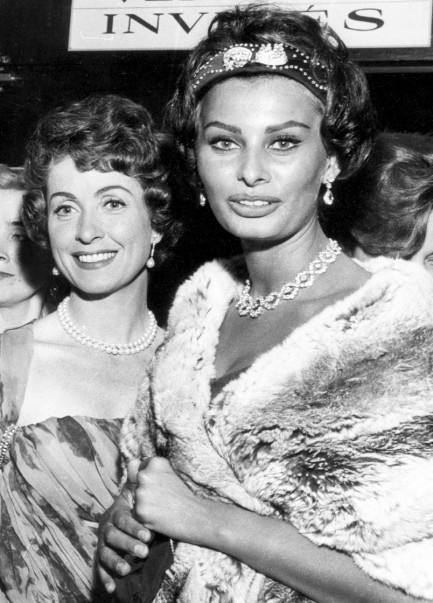 Danielle Darrieux and Sophia Loren at the 11th Cannes Film Festival, 1958. Danielle Darrieux and Sophia Loren at the 11th Cannes Film Festival, 1958.
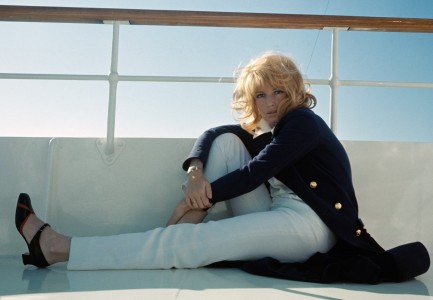 Italian actress Monica Vitti chills on a boat in 1968. Italian actress Monica Vitti chills on a boat in 1968.
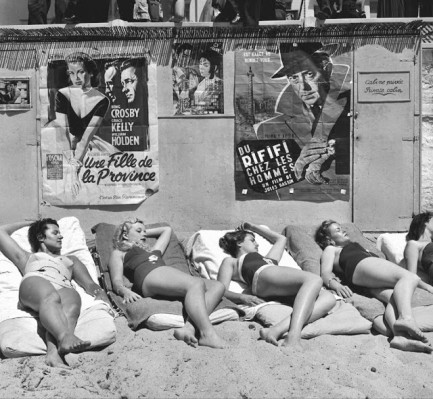 Aspiring stars catch some rays on the Croisette beach in 1955. The two large posters behind them are for The Country Girl with Grace Kelly, and Jules Dassin's Du rififi chez les hommes, both below. Aspiring stars catch some rays on the Croisette beach in 1955. The two large posters behind them are for The Country Girl with Grace Kelly, and Jules Dassin's Du rififi chez les hommes, both below.
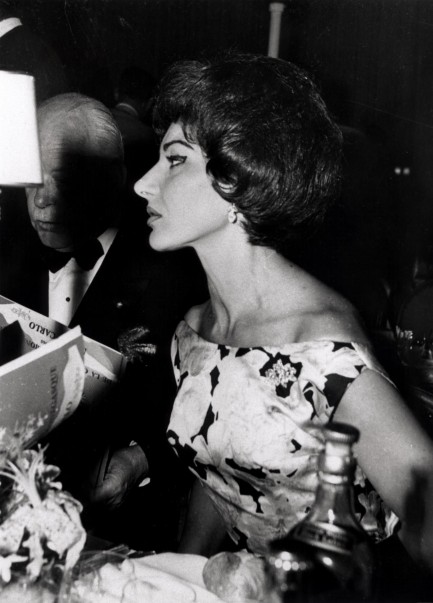 The renowned opera singer Maria Callas, 1960. The renowned opera singer Maria Callas, 1960.
 Goodis gets down and dirty while Hooks takes it up a notch. 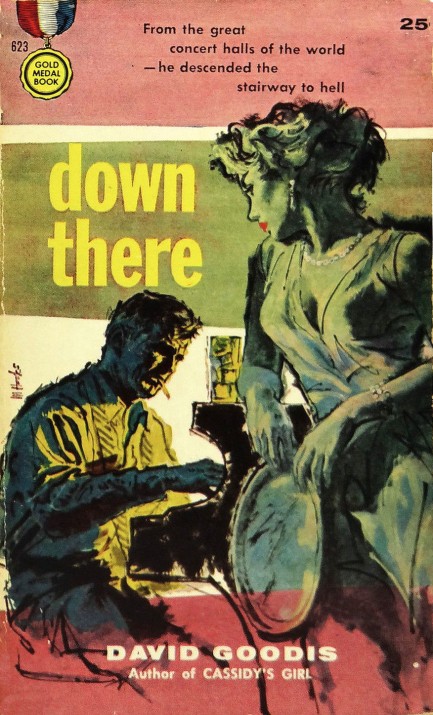
This cover for David Goodis's 1956 novel Down There was painted by Mitchell Hooks, one of the unique talents of the paperback art era. Hooks worked in different modes. Often he utilized the type of line art you'd find in a high quality comic book or graphic novel, such as here and here. Other times he used color blocking for his backgrounds, such as on the above cover and the one you see at this link. He also used a lot of color bleeds, an example of which you see on his brilliant front for Madball, the second one at this link. And he worked in a more realistic mode too, when the mood struck. For Down There he mixed techniques, using a bleed in black to impart a film noir feel, and pairing his two figures with his trademark color-blocking. The effect is magnificent. Hooks was simply a highly versatile artist who always managed to surprise, and that makes his work a constant pleasure to seek out.
His cover for Down There fits Goodis like a glove. The novel is the unrelentingly grim story of a man whose piano playing genius saves him from a life of crime and transforms him into a classical music star, but who is inexorably dragged back into the depths of violence and revenge when his criminal brother needs protection. We soon learn that there are two brothers, both crooks, both neck deep in organized crime trouble. The reader catches no breaks—Goodis is matter-of-factly dark, spinning the tale from the point-of-view of an emotionally crippled main character, and crushing hope in heartwrenching ways that make the turning of pages a real effort at times.
Why put yourself through something like this? Well, it's very stylish, so much so that French director François Truffaut fell in love with it and adapted it to film in the form of Tirez sur le pianiste, known in English as Shoot the Piano Player. Truffaut was world famous after winning best director at the 1959 Cannes Film Festival for Les Quatre Cents Coups, aka The 400 Blows, so choosing Down There for his next project says plenty about the book. Goodis was well received by French directors in general. Other adaptations of his work were made by Pierre Chenal, Jacques Tourneur, Henri Verneuil, Francis Girod, René Clément, Gilles Behat, and Jean-Jacques Beineix. That's just remarkable. We'll probably watch some of those films, and you can be sure we'll revisit both David Goodis and Mitchell Hooks imminently.
 I didn't know that a girl like you could make me feel so sad... 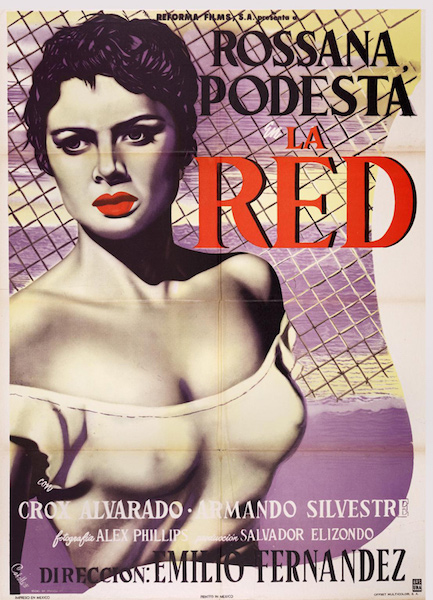
A couple of weeks ago we shared a Mexican movie poster we weren't 100% sure was actually from Mexico. This time we're sure—this beautiful promo Antonio Caballero painted for the melodrama La red says right in the lower left corner “impreso en México.” In that previous write-up we also talked about how popular locally produced films were in Mexico before the industry was suffocated by U.S. business and political interests, and this effort is an example. It was made by Reforma Films S.A., based in Mexico City, and starred Libyan born Italian actress Rossana Podesta, Costa Rican actor Crox Alvarado, and U.S. born actor Armando Silvestre. Enticing a burgeoning international star like Podesta over from Europe indicates how established the Mexican film industry was in 1953, when La red was made.
Interestingly, when the movie played in the U.S. it was titled simply Rosanna, which makes sense, because it would be nothing without Podesta. It struck us that even though Toto didn't write their song of obsession “Rosanna” about Podesta, they might as well have. The film begins when a group of men botch a robbery, a shootout commences, and one of the bandits, Antonio, played by Alvarado, tries to help his wounded comrade. But the dying man gasps to Antonio, “Save yourself—for Rossana.” So we know she's a special woman even before seeing her. Antonio does save himself and goes to live on the seaside with Podesta, where the two harvest sea sponges. It's idyllic, but as a wanted thief he has to lay low, which means sending her alone to town to sell their catch. And the men in the town are... well... see below:
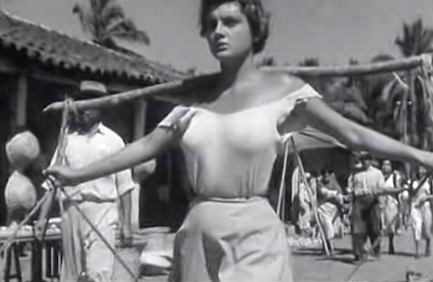 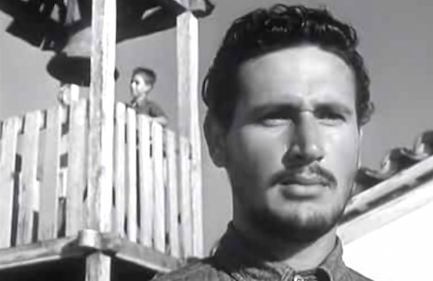 I am intrigued by this spicy redhead. I am intrigued by this spicy redhead.
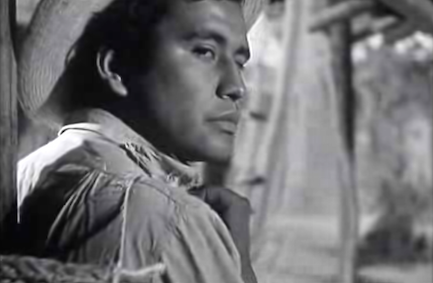 I too find myself somewhat taken with this mysterious chile pepper of a woman. I too find myself somewhat taken with this mysterious chile pepper of a woman.
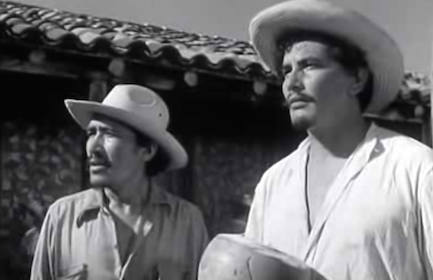 Perhaps I'll invite her to coffee and a cronut. That's a cross between a croissant and a donut, my friend, and living out there on the idyllic seashore as she does, I bet she's never had one. Perhaps I'll invite her to coffee and a cronut. That's a cross between a croissant and a donut, my friend, and living out there on the idyllic seashore as she does, I bet she's never had one.
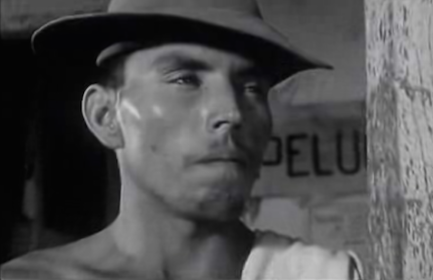 I wonder if she's a fan of our great romantic poet Salvador Díaz Mirón? I wonder if she's a fan of our great romantic poet Salvador Díaz Mirón?
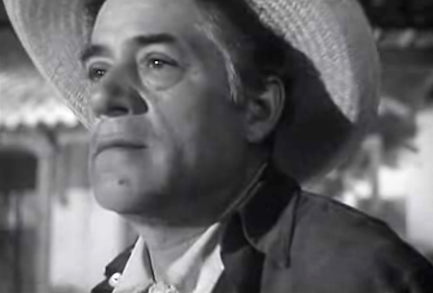 I'm certain she has no idea how quickly European skin can burn in this tropical climate. I'm certain she has no idea how quickly European skin can burn in this tropical climate.
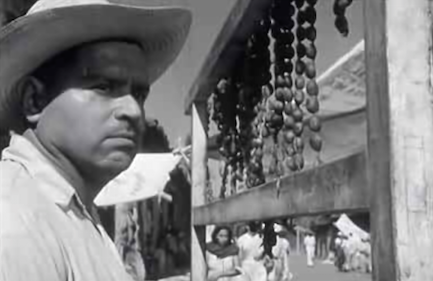 I'm admittedly less high minded than other men, and mainly wonder what she looks like naked, and whether the carpet is red too. I'm admittedly less high minded than other men, and mainly wonder what she looks like naked, and whether the carpet is red too.
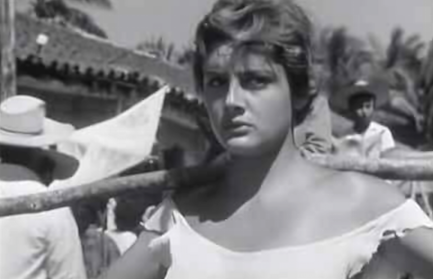 What the hell are all these guys staring— Oh. I think it's me. What the hell are all these guys staring— Oh. I think it's me.
Clearly, these trips into town are menacing affairs for Podesta. If you were to screen the sequences at an anti-sexual harassment seminar, every guy in the joint would bow his head in shame. Important to note, though, that within the narrative these aggressively pervy guys are depicted in a negative light, with even the soundtrack music growing ominous. When one of Antonio's robbery compatriots shows up in town, he gets into a shootout that leaves two men dead, and therein are sown the seeds of future troubles. We won't say more, save that the film is stagy, stylized, operatic, almost devoid of dialogue, and largely remembered because of Podesta's role. It all worked well enough to earn the Prix International du film le mieux raconté par l'image, aka the Award for Visual Narration, at the Cannes Film Festival.
Moving on to the poster, have a look at a previous Mexican promo we shared last year. It's here. We'll wait. Back? You'd think it was the same person who painted both, but the reason we wanted you to glance at the other one is because it exemplifies the strange phenomenon of artists within the same film industry biting each other's styles. It happened in Italy and Sweden too. Either through direct influence from the studios, or through osmosis due to mutual association, several Mexican artists delved into this art deco tinged style. Check out Leopoldo Mendoza Andrade here. Interesting, right? You'll see what we mean even more clearly when we share posters from other Mexican artists, for example Juan Antonio Vargas. That'll be soon. La Red premiered in Mexico today in 1953. 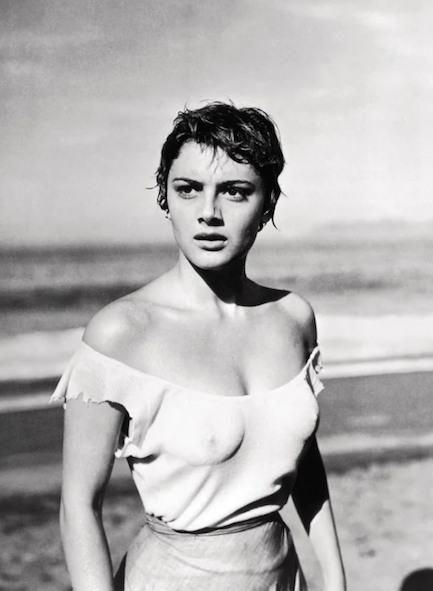
 From behind the microscope to in front of the camera. 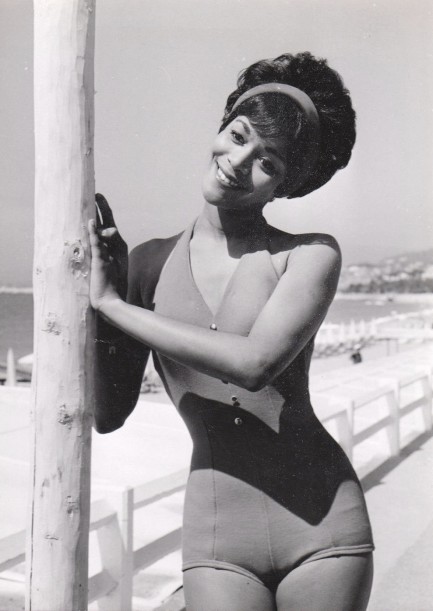
You don't know U.S. actress Emily Yancy but she's been around for a long time. She started performing on television in 1963 and is still going strong as of 2018. Of her few cinematic efforts two were notable—the blaxploitation classics Cotton Comes to Harlem and Blacula. Her small screen appearances include Starsky & Hutch, The Mod Squad, and MacGyver.
The above photo is from 1961, and it was made when she was eighteen years old and competing in the Miss American Beauty Pageant, not be confused with the Miss America Pageant. Interesting story, she was a biology major and was working at NYU Medical Center operating an electron microscope when her coworkers persuaded her to give parading up and down a stage in a swimsuit a shot. She won Miss American Beauty, which gave her a chance to compete again in France.
She was sent to Cannes and finished second in the Miss Cannes Film Festival competition. After that Hollywood called and those boring old electrons were forgotten. Television, film, nightclub performing, modeling and a lot of travel followed. There's a lesson in this story, and maybe not one that should be taught to little girls—Forget science! Give us a little leg!—but you don't need a microscope to see that Yancy takes a great picture, and her career longevity suggests she made a good choice.
 In the land of bad men the one eyed woman becomes queen 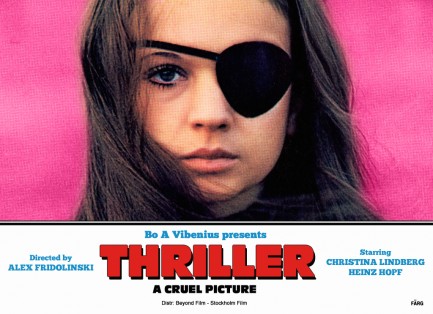
Above is a promo poster for the Swedish sexploitation flick Thriller - en grym film. When it was released in the U.S. it was retitled Thriller: A Cruel Picture, then edited and given the revised name They Call Her One Eye, and still later dubbed Hooker's Revenge, which we think gives a bit too much away. But what do we know? It's not like we have marketing degrees. Anyway, the poster above for the film's Thriller incarnation has an unusual shape sometimes referred to as subway size because such promos were usually displayed on mass transit vehicles. There are other sizes and orientations of promos for this film, and we'll probably show you a few of those later just for the sake of completeness.
Sweden's best export Christina Lindberg stars here as a Frigga, a young woman gone mute due to a sexual assault in her youth. Terrible luck strikes again when, as an adult, she's abducted, addicted to heroin, and forced into prostitution. She resists, but after she harms a customer her pimp punishes her by cutting her eye out with a scalpel. After enduring further indignities she eventually musters the courage to try and escape. Heroin addiction is the leash her pimp counts on to keep her in line, but she's otherwise free to use her down time as she wishes. With the little money she has she secretly buys lessons in martial arts, shooting, and tactical driving, then when the moment is ripe she finally goes on a revenge spree.
There's nothing here you won't find in other 1970s revenge sexploitation flicks except lots of slo-mo, but for Lindberg's fans—among them Quentin Tarantino, who borrowed the eyepatch look for Daryl Hannah when he made Kill Bill—this is probably a must-see. As a side note, you'll sometimes find Lindberg referenced as a porn actress because of this movie. BAV Film made two versions, one with x-rated inserts and one without. The explicit stuff was done by a stand-in. Or a lay-in. In an interview Lindberg once said the hardest part of her career was resisting the constant pressure to do porn. We suspect this was a film she had in mind. After premiering in France at the Cannes Film Festival in 1973, Thriller: A Cruel Picture first opened eyes in the U.S. today in 1974. 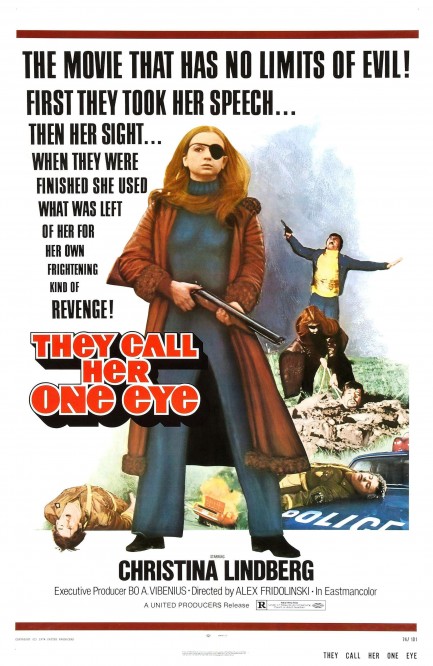  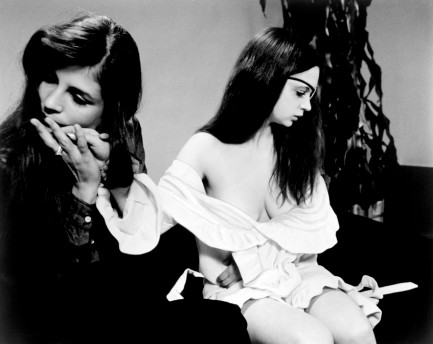 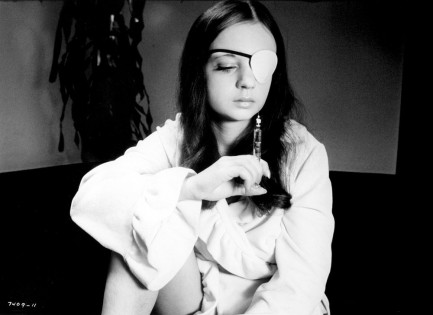 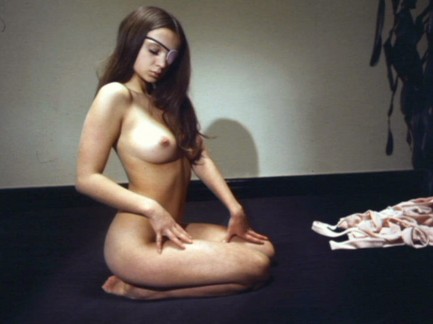 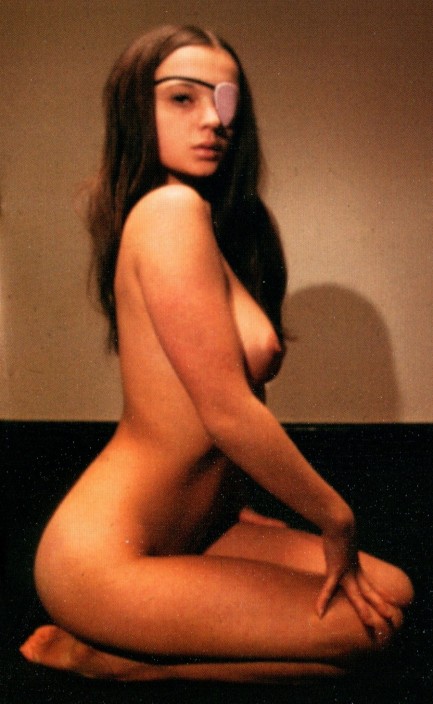 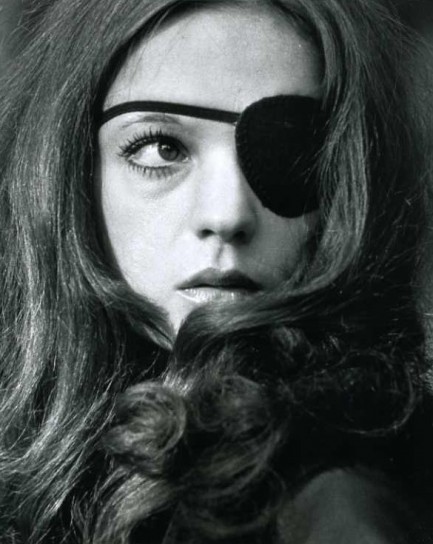 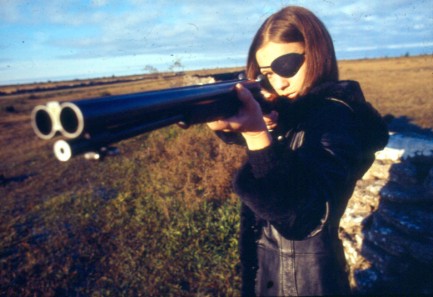 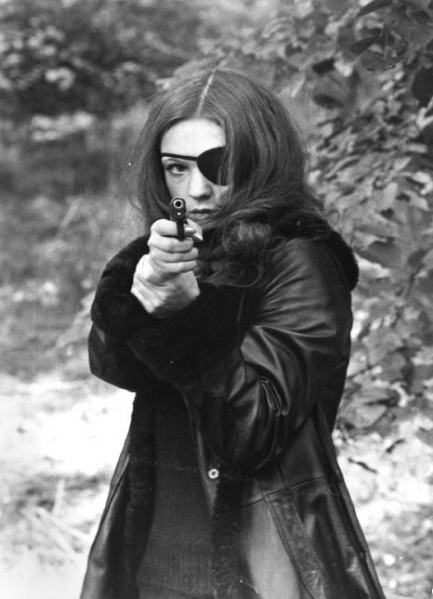 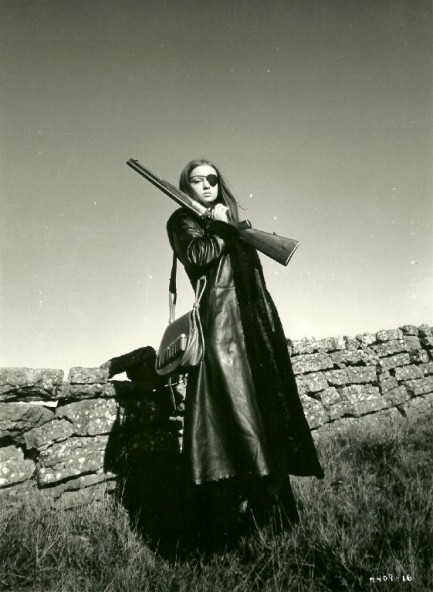  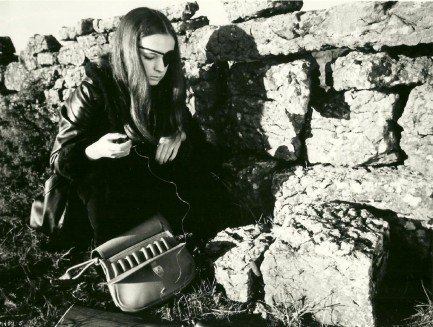 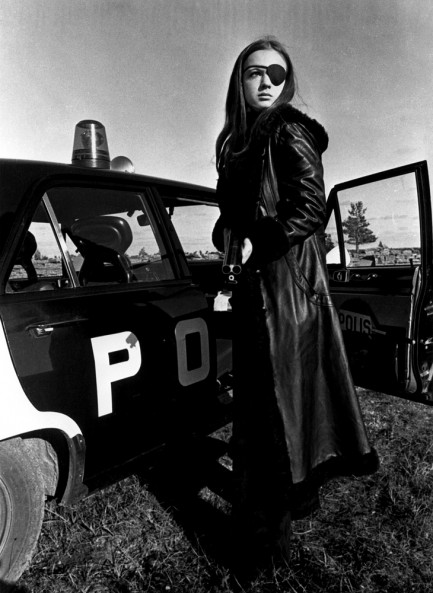 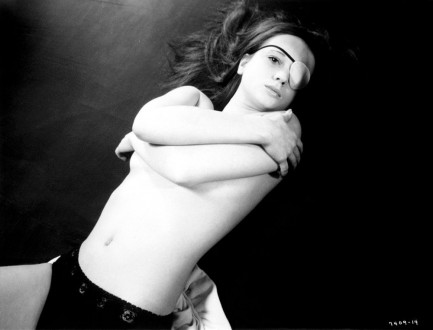 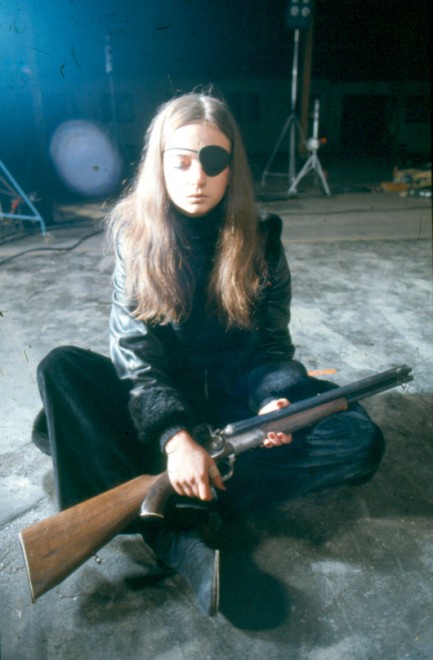 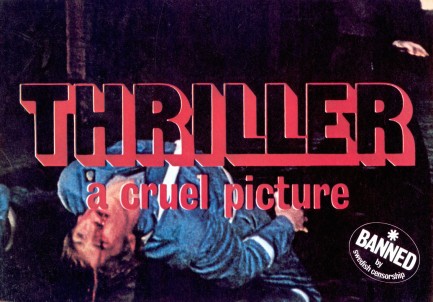 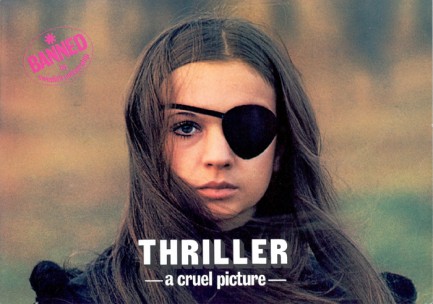
 Cannes goods take on a whole new flavor. 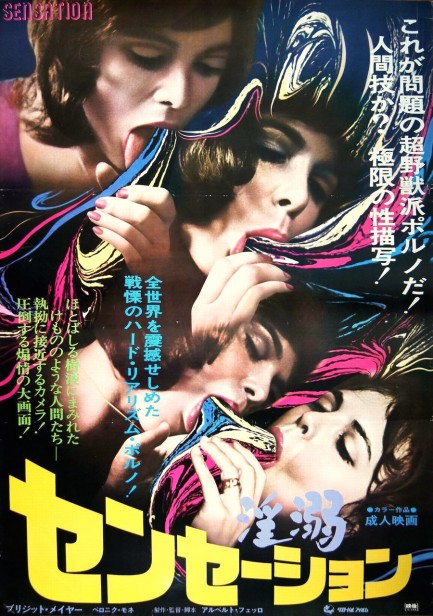
Today in 1976 the U.S. porno movie Sensations premiered in Japan. We talked about it five years ago and shared an amazing Japanese promo poster painted by William Stok. That piece was an alternate promo. The one you see above was more widely used. While it's no Stok, in its own way it's almost as interesting, with star Brigitte Maier seeming to fellate psychedelic emissions of unknown composition and provenance. Of course, the Japanese designers merely painted over what she was really tasting. The visual effect is rather nice, we think.
Sensations—referred to on the poster as Sensation—was well received upon release. Bruce Williamson of Playboy called it a “sensually pulsating sextravaganza” that was “the best bet of all for outright voyeurs.” The film was so highly regarded it even screened at the Cannes Film Festival. Does that mean it's good? Not exactly. Not by any normal standard. But we mention the Cannes thing because if someone walks in unexpectedly while you're watching it you are now equipped to indignantly inform them: “Porn? Porn? I'll have you know this played in Cannes!” 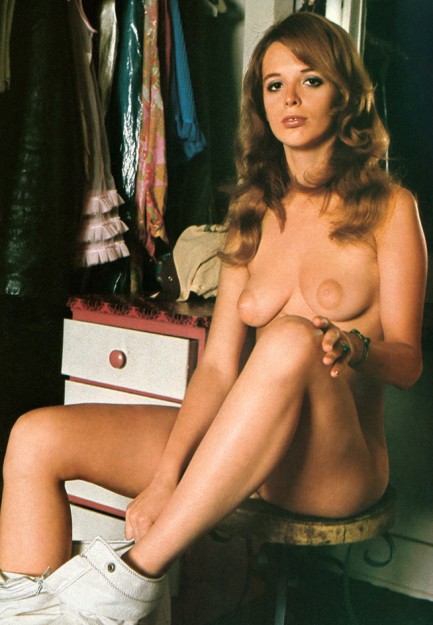

|
 |

The headlines that mattered yesteryear.
2003—Hope Dies
Film legend Bob Hope dies of pneumonia two months after celebrating his 100th birthday. 1945—Churchill Given the Sack
In spite of admiring Winston Churchill as a great wartime leader, Britons elect
Clement Attlee the nation's new prime minister in a sweeping victory for the Labour Party over the Conservatives. 1952—Evita Peron Dies
Eva Duarte de Peron, aka Evita, wife of the president of the Argentine Republic, dies from cancer at age 33. Evita had brought the working classes into a position of political power never witnessed before, but was hated by the nation's powerful military class. She is lain to rest in Milan, Italy in a secret grave under a nun's name, but is eventually returned to Argentina for reburial beside her husband in 1974. 1943—Mussolini Calls It Quits
Italian dictator Benito Mussolini steps down as head of the armed forces and the government. It soon becomes clear that Il Duce did not relinquish power voluntarily, but was forced to resign after former Fascist colleagues turned against him. He is later installed by Germany as leader of the Italian Social Republic in the north of the country, but is killed by partisans in 1945.
|

|
|

It's easy. We have an uploader that makes it a snap. Use it to submit your art, text, header, and subhead. Your post can be funny, serious, or anything in between, as long as it's vintage pulp. You'll get a byline and experience the fleeting pride of free authorship. We'll edit your post for typos, but the rest is up to you. Click here to give us your best shot.

|
|






























 In the first photo Lindberg is on the patio of a Cannes bar, and from her perch atop a table she stripped off everything except her panties while dozens of photographer captured her likeness and bystanders gawped at the spectacle. You can see some of assembled press in the fuzzy reverse angle at right. A bit later, on the terrace of the Majestic Hotel where she was staying, her clothes hit the tiles again, as you see below.
In the first photo Lindberg is on the patio of a Cannes bar, and from her perch atop a table she stripped off everything except her panties while dozens of photographer captured her likeness and bystanders gawped at the spectacle. You can see some of assembled press in the fuzzy reverse angle at right. A bit later, on the terrace of the Majestic Hotel where she was staying, her clothes hit the tiles again, as you see below.



 Fine, Toro, you're huge. Massive. Enormous. But you need to learn how to box or the champ is going to crush your face like a graham cracker.
Fine, Toro, you're huge. Massive. Enormous. But you need to learn how to box or the champ is going to crush your face like a graham cracker. Hi, champ! Before we start, I just want to say I'm probably your biggest admir—
Hi, champ! Before we start, I just want to say I'm probably your biggest admir— I thought that whole graham cracker speech was just Bogie being colorful.
I thought that whole graham cracker speech was just Bogie being colorful.




















 Edith Piaf sings on the terrace of the Carlton Hotel on the iconic Boulevard de la Croisette at the first Festival de Cannes to be held under that name, in 1946. Back then the event took place in September and October, but would shift to May a bit later.
Edith Piaf sings on the terrace of the Carlton Hotel on the iconic Boulevard de la Croisette at the first Festival de Cannes to be held under that name, in 1946. Back then the event took place in September and October, but would shift to May a bit later.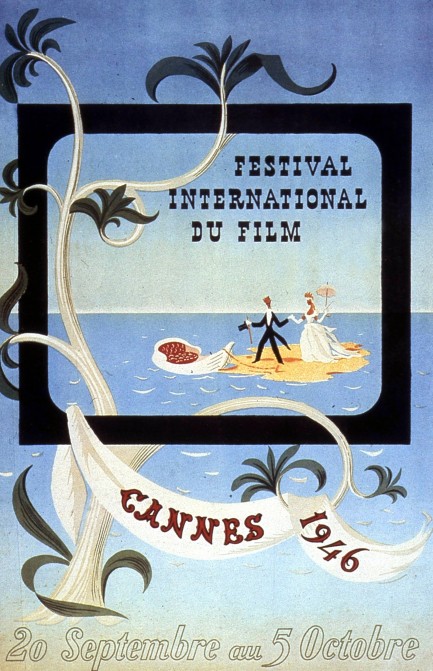
 Diana Dors and Ginger Rogers arrive at the fest the only way anyone should—breezing along the beachfront in a convertible, in 1956, with an unknown driver.
Diana Dors and Ginger Rogers arrive at the fest the only way anyone should—breezing along the beachfront in a convertible, in 1956, with an unknown driver. Kirk Douglas holds court on the beach in 1953, and Brigitte Bardot soaks up rays in the foreground.
Kirk Douglas holds court on the beach in 1953, and Brigitte Bardot soaks up rays in the foreground. Michele Morgan poses at the first Festival in 1946. Photo ops of this sort were essential sources of publicity for stars, and would soon become opportunities for non-stars seeking to be discovered.
Michele Morgan poses at the first Festival in 1946. Photo ops of this sort were essential sources of publicity for stars, and would soon become opportunities for non-stars seeking to be discovered. Case in point. Robert Mitchum poses with actress Simone Sylva in 1954. Sylva was allegedly not supposed to be there, but shucked her top and photo-bombed Douglas in an attempt to raise her profile. It didn't work. She made only a couple of credited movie appearances after her topless stunt.
Case in point. Robert Mitchum poses with actress Simone Sylva in 1954. Sylva was allegedly not supposed to be there, but shucked her top and photo-bombed Douglas in an attempt to raise her profile. It didn't work. She made only a couple of credited movie appearances after her topless stunt. Romy Schneider and Alain Delon at the 1959 fest.
Romy Schneider and Alain Delon at the 1959 fest. An unidentified model or actress poses in the style of Anita Ekberg from La dolce vita in 1960. This looks like it was shot at Plage du Midi, which is a beach located a little ways west of the Cannes town center.
An unidentified model or actress poses in the style of Anita Ekberg from La dolce vita in 1960. This looks like it was shot at Plage du Midi, which is a beach located a little ways west of the Cannes town center. A unidentified partygoer is tossed into a swimming pool after La Dolce Vita won the the 1960 Palme d’Or. The Festival is almost as well known for legendary parties as for legendary film premieres.
A unidentified partygoer is tossed into a swimming pool after La Dolce Vita won the the 1960 Palme d’Or. The Festival is almost as well known for legendary parties as for legendary film premieres.
 Another unidentified model or actress poses on the boardwalk in 1979. Generally, you don't have to be known to draw a crowd of photographers—you just have to be nearly bare. She's wearing lingerie, so that explains the interest, though this is modest garb for a Cannes publicity stunt. It's never a surprise to see a headline-seeking film hopeful strip all the way down to a string ficelle féminin, or thong, which is the limit of what is legal in Cannes
Another unidentified model or actress poses on the boardwalk in 1979. Generally, you don't have to be known to draw a crowd of photographers—you just have to be nearly bare. She's wearing lingerie, so that explains the interest, though this is modest garb for a Cannes publicity stunt. It's never a surprise to see a headline-seeking film hopeful strip all the way down to a string ficelle féminin, or thong, which is the limit of what is legal in Cannes Sidney Poitier and Jean Seberg have a laugh in 1961. This was the year Poitier's flick Paris Blues was released, so it's possible he had jetted down from the capital for the Festival.
Sidney Poitier and Jean Seberg have a laugh in 1961. This was the year Poitier's flick Paris Blues was released, so it's possible he had jetted down from the capital for the Festival. Philomène Toulouse relaxes on the sand in 1962 while a boy practices the classic French look of disgust he'll be using the rest of his life.
Philomène Toulouse relaxes on the sand in 1962 while a boy practices the classic French look of disgust he'll be using the rest of his life. Actor Bernard Blier, 1975.
Actor Bernard Blier, 1975. An unidentified bikini wearer boldly enjoys a lunch in a café on the Croisette, 1958.
An unidentified bikini wearer boldly enjoys a lunch in a café on the Croisette, 1958. Natalie Wood aboard a sailboat in 1962.
Natalie Wood aboard a sailboat in 1962.
 Grace Kelly, 1955.
Grace Kelly, 1955. Kelly times two—Grace Kelly and Gene Kelly, hanging out, also in 1955.
Kelly times two—Grace Kelly and Gene Kelly, hanging out, also in 1955. Sammy Davis, Jr. poses in front of a billboard promoting his film A Man Called Adam, 1966.
Sammy Davis, Jr. poses in front of a billboard promoting his film A Man Called Adam, 1966. Joan Scott gets sand between her toes in 1955. Scott is obscure. She isn't even the most famous Joan Scott anymore. The IMDB entry for the only Joan Scott near the appropriate age is for an actress born in 1920 who didn't begin acting until 1967. The Joan Scott above doesn't look thirty-five, though, and we doubt she would have been the subject of this somewhat well-known photo without parlaying it into a film appearance before twelve years had passed. So we don't think this is the Joan Scott referenced on IMDB.
Joan Scott gets sand between her toes in 1955. Scott is obscure. She isn't even the most famous Joan Scott anymore. The IMDB entry for the only Joan Scott near the appropriate age is for an actress born in 1920 who didn't begin acting until 1967. The Joan Scott above doesn't look thirty-five, though, and we doubt she would have been the subject of this somewhat well-known photo without parlaying it into a film appearance before twelve years had passed. So we don't think this is the Joan Scott referenced on IMDB.
 Sharon Tate, with Roman Polanski, and solo, 1968.
Sharon Tate, with Roman Polanski, and solo, 1968. Marlene Dietrich brings glamour to a tiki themed bar in 1958.
Marlene Dietrich brings glamour to a tiki themed bar in 1958.
 Tippi Hedren and Alfred Hitchcock release caged birds as a promo stunt for The Birds in 1963.
Tippi Hedren and Alfred Hitchcock release caged birds as a promo stunt for The Birds in 1963. Sophia Loren sits with husband Carlo Ponti, who was a member of the 1966 Festival jury.
Sophia Loren sits with husband Carlo Ponti, who was a member of the 1966 Festival jury. Raquel Welch poses on a motorcycle in 1966.
Raquel Welch poses on a motorcycle in 1966. Jane Birkin takes aim with one of her cameras in 1975.
Jane Birkin takes aim with one of her cameras in 1975. Dorothy Dandridge frolics in 1955, when she was promoting her film Carmen Jones.
Dorothy Dandridge frolics in 1955, when she was promoting her film Carmen Jones. Cinematic icon Catherine Deneuve and her sister Françoise Dorléac in 1965. Dorléac died in an automobile accident a couple of years later.
Cinematic icon Catherine Deneuve and her sister Françoise Dorléac in 1965. Dorléac died in an automobile accident a couple of years later. Robert Redford lounges on the beach in 1972. Based on his outfit you'd think he was in Cannes to promote The Sting, but he was actually there for his western Jeremiah Johnson, which screened May 7 of that year.
Robert Redford lounges on the beach in 1972. Based on his outfit you'd think he was in Cannes to promote The Sting, but he was actually there for his western Jeremiah Johnson, which screened May 7 of that year. Sophia Loren waves to well-wishers in 1964.
Sophia Loren waves to well-wishers in 1964. Bogie and Bacall paired up and looking distinguished in 1957.
Bogie and Bacall paired up and looking distinguished in 1957.
 John and Cynthia Lennon in 1965, and John with Yoko Ono in 1971. Every story John told on that second trip probably started with, “When I was here with the first love of my life...” until Yoko smacked him across the mouth.
John and Cynthia Lennon in 1965, and John with Yoko Ono in 1971. Every story John told on that second trip probably started with, “When I was here with the first love of my life...” until Yoko smacked him across the mouth. Rock Hudson and bicycle in 1966.
Rock Hudson and bicycle in 1966. Unidentified actresses pose on the beach in 1947. To the rear is the Hotel Carlton, mentioned in the Edith Piaf image, built on the Croisette and finished in 1910.
Unidentified actresses pose on the beach in 1947. To the rear is the Hotel Carlton, mentioned in the Edith Piaf image, built on the Croisette and finished in 1910. George Baker, Bella Darvi (right—your right, not his), and an unknown acquaintance have a surfside run/photo op in 1956.
George Baker, Bella Darvi (right—your right, not his), and an unknown acquaintance have a surfside run/photo op in 1956. Jayne Mansfield and Russian actress Tatiana Samoïlova enjoy a toast in 1958. Mansfield probably shared the story of how she once made Sophia Loren stare at her boobs, and Samoïlova said, “Cheers to you—well played, you provocative American minx.”
Jayne Mansfield and Russian actress Tatiana Samoïlova enjoy a toast in 1958. Mansfield probably shared the story of how she once made Sophia Loren stare at her boobs, and Samoïlova said, “Cheers to you—well played, you provocative American minx.” French actor Fernandel, whose real name was Fernand Contandin, on his boat Atomic in 1956.
French actor Fernandel, whose real name was Fernand Contandin, on his boat Atomic in 1956. Arlette Patrick figures out a different way to generate publicity—by walking her sheep on the Croisette in 1955.
Arlette Patrick figures out a different way to generate publicity—by walking her sheep on the Croisette in 1955. A pair of water skiers show perfect form in 1955, as a battleship floats in the background.
A pair of water skiers show perfect form in 1955, as a battleship floats in the background. Jeanne Moreau, for reasons that are unclear, poses on a banquet table in 1958. Most sources descibe this in such a way as to make it seem spontaneous, but we have our doubts. It's a great shot, though.
Jeanne Moreau, for reasons that are unclear, poses on a banquet table in 1958. Most sources descibe this in such a way as to make it seem spontaneous, but we have our doubts. It's a great shot, though. Two unidentified women take in the scene from the terrace of the Hotel Carlton, 1958. This shot is usually said to portray two tourists, but the woman on the left is the same person as in the bikini lunch shot from earlier, which tells us she's a model or actress, and both photos are staged. Like we said, publicity is everything in Cannes.
Two unidentified women take in the scene from the terrace of the Hotel Carlton, 1958. This shot is usually said to portray two tourists, but the woman on the left is the same person as in the bikini lunch shot from earlier, which tells us she's a model or actress, and both photos are staged. Like we said, publicity is everything in Cannes.
 Danielle Darrieux and Sophia Loren at the 11th Cannes Film Festival, 1958.
Danielle Darrieux and Sophia Loren at the 11th Cannes Film Festival, 1958. Italian actress Monica Vitti chills on a boat in 1968.
Italian actress Monica Vitti chills on a boat in 1968. Aspiring stars catch some rays on the Croisette beach in 1955. The two large posters behind them are for The Country Girl with Grace Kelly, and Jules Dassin's Du rififi chez les hommes, both below.
Aspiring stars catch some rays on the Croisette beach in 1955. The two large posters behind them are for The Country Girl with Grace Kelly, and Jules Dassin's Du rififi chez les hommes, both below.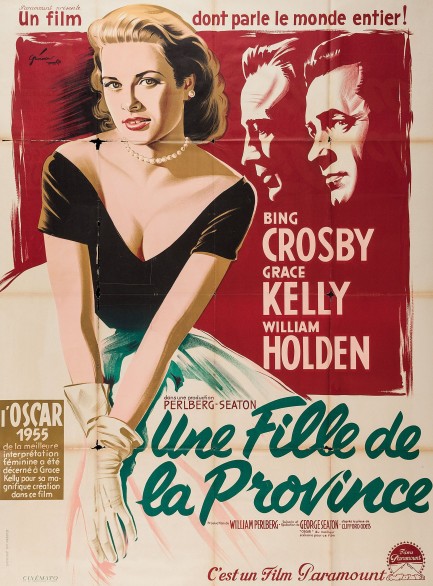
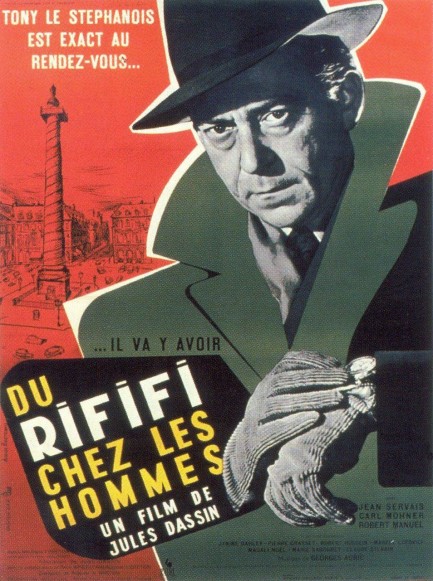
 The renowned opera singer Maria Callas, 1960.
The renowned opera singer Maria Callas, 1960.




 I am intrigued by this spicy redhead.
I am intrigued by this spicy redhead. I too find myself somewhat taken with this mysterious chile pepper of a woman.
I too find myself somewhat taken with this mysterious chile pepper of a woman. Perhaps I'll invite her to coffee and a cronut. That's a cross between a croissant and a donut, my friend, and living out there on the idyllic seashore as she does, I bet she's never had one.
Perhaps I'll invite her to coffee and a cronut. That's a cross between a croissant and a donut, my friend, and living out there on the idyllic seashore as she does, I bet she's never had one. I wonder if she's a fan of our great romantic poet Salvador Díaz Mirón?
I wonder if she's a fan of our great romantic poet Salvador Díaz Mirón? I'm certain she has no idea how quickly European skin can burn in this tropical climate.
I'm certain she has no idea how quickly European skin can burn in this tropical climate. I'm admittedly less high minded than other men, and mainly wonder what she looks like naked, and whether the carpet is red too.
I'm admittedly less high minded than other men, and mainly wonder what she looks like naked, and whether the carpet is red too. What the hell are all these guys staring— Oh. I think it's me.
What the hell are all these guys staring— Oh. I think it's me.





























































































